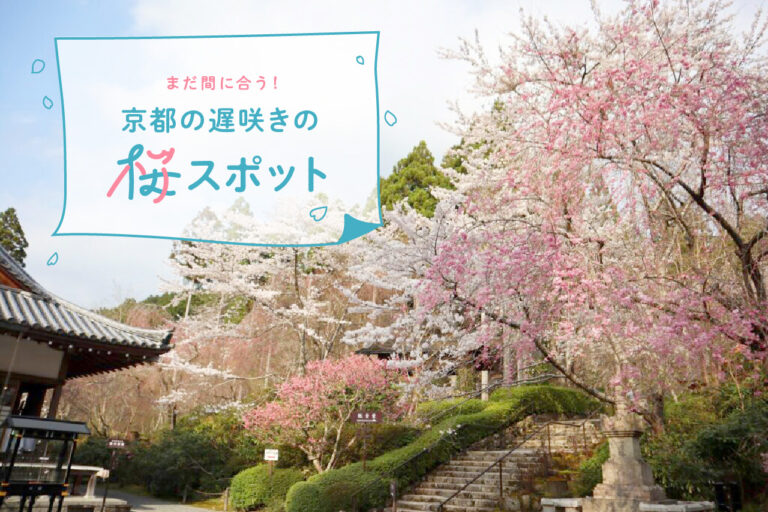
[2025] It's Not Too Late to Enjoy the Late Blooming Cherry Blossoms in Kyoto! Late Blooming Cherry Blossoms in Kyoto...
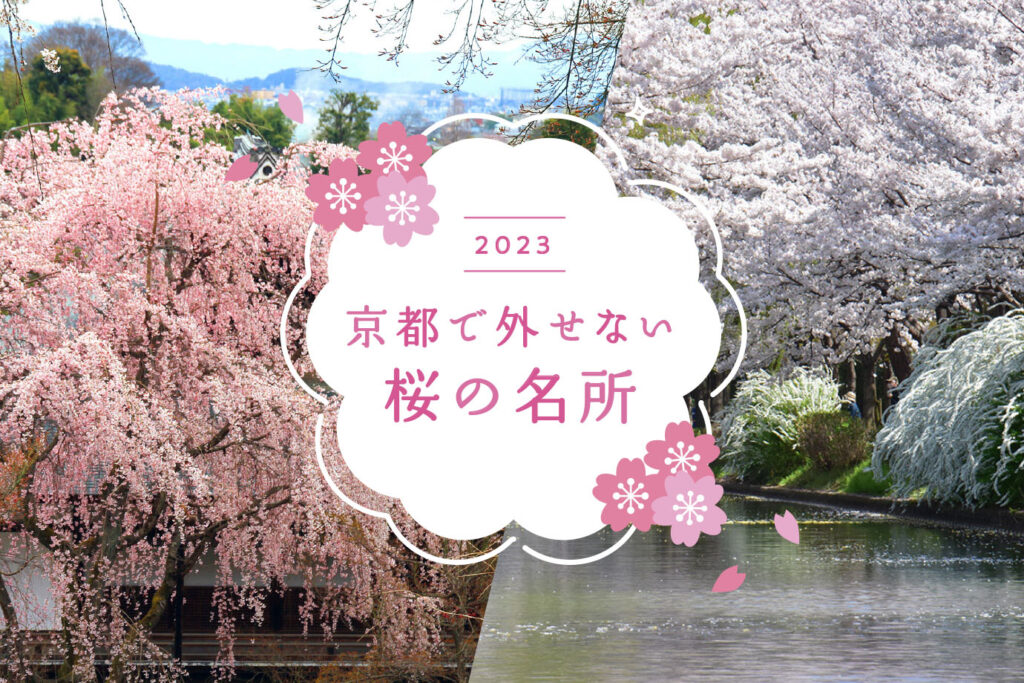

The cold winter has passed, and now we can feel the warmth of spring sunshine. If you come to Kyoto, you can't miss this spot! I definitely want to go there! This time, we would like to introduce some of Kyoto's representative cherry blossom viewing spots that will lead you to such a feeling.
![[2023] Enjoy the cherry blossoms at night! 13 cherry blossom light-ups to enjoy in Kyoto](https://www.leafkyoto.net/leaf/wp-content/uploads/2023/03/230315-yozakura-300x200.jpg)
We will introduce information on the lighting up of Kyoto, from famous places where you can enjoy nighttime viewing to hidden gems, where you can stop by on your day off or after work!
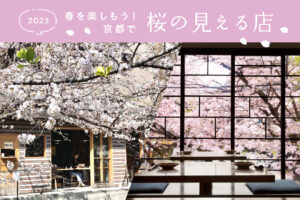
Enjoy the cherry blossoms while relaxing and eating delicious food at a "cherry blossom-viewing restaurant" that locals love!
Ninna-ji Temple is a monzeki temple with deep ties to the Imperial Family, and for many years has been headed by a member of the Imperial Family.
In addition to someiyoshino cherry trees in front of the Kondo Hall and weeping cherry trees in front of the bell tower, about 200 late-blooming "Omuro-zakura" cherry trees, known as a synonym for Ninna-ji Temple, bloom in the cherry garden from mid-April. The contrast between the elegant architecture and the cherry blossoms is magnificent.
-1024x682.jpg)
Ninna-ji Temple Omuro Cherry Blossom, Goten, North Garden Photo by Sohonzan Ninna-ji Temple

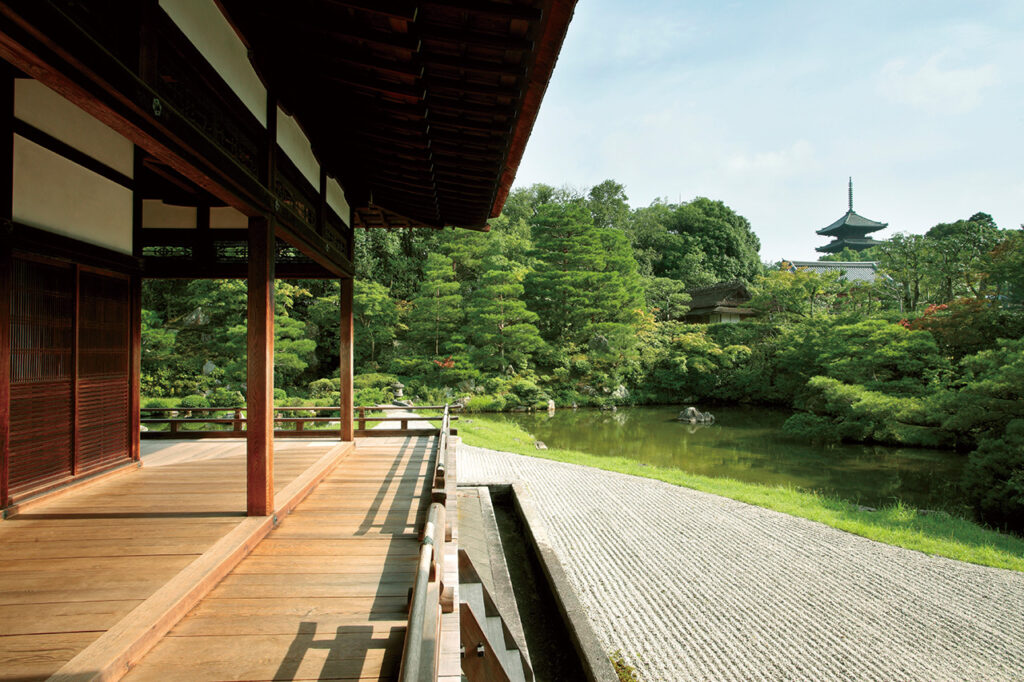

Best time to visit: Early to mid-April
Hours: Mar-Nov 9:00-17:00, Dec-Feb 9:00-16:00 * Ninna-ji Gosho Garden
Admission: Gosho Garden, 800 yen for adults, free for high school students and younger
Kamowakeikazuchi Shrine is one of the oldest shrines in Kyoto. It is commonly known as Kamigamo Shrine.
The 150-year-old Saio-zakura (cherry blossoms) with red, double-layered weeping branches, Gosho-zakura (cherry blossoms in the Imperial Palace) with white flowers that open in late March, Bade-shino-zakura (cherry blossoms at the shrine's entrance), and whipping-horse cherry blossoms line the side of the approach that extends in a straight line from Ichi-no-torii (first torii) to Ni-no-torii (second torii). In addition, there is a cherry tree with only red blossoms beyond the second torii (second shrine gate), and a variety of cherry trees with different origins are on display.
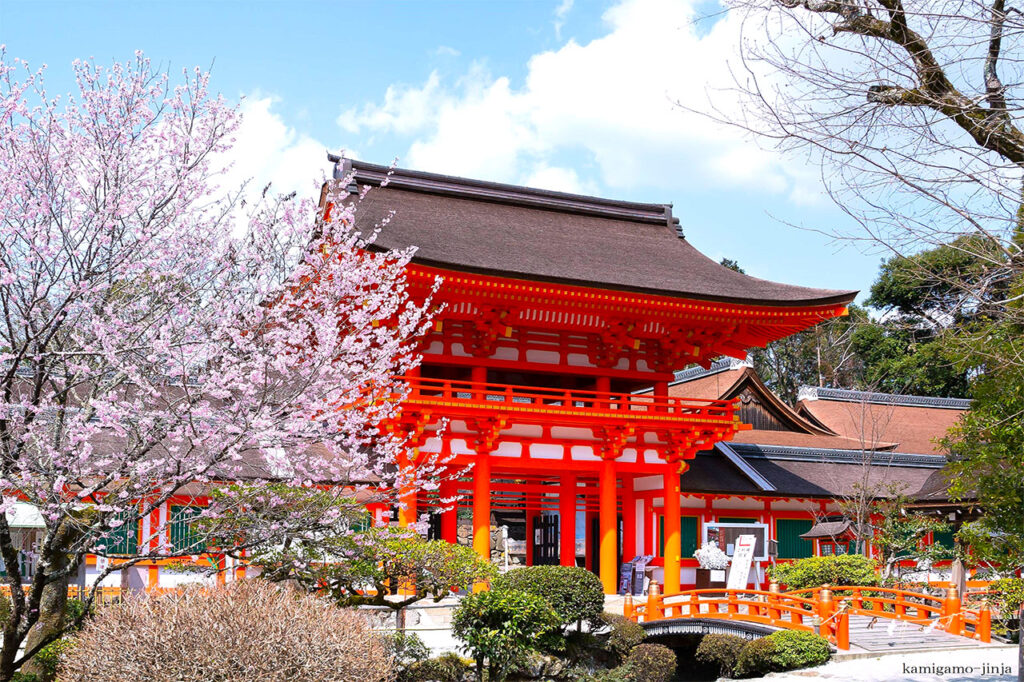
(Photo courtesy of Kamigamo Shrine)

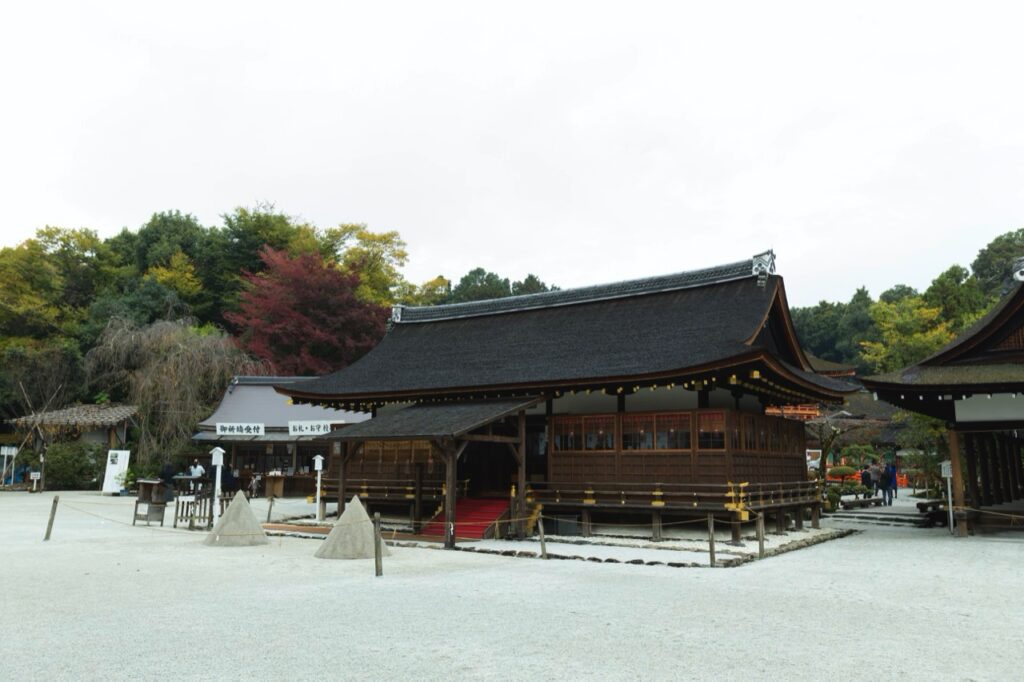

Best time to visit: Mid-March to late April
Hours of visitation/5:30-17:00
Admission fee/free
[A walking path [half-tree path] on the west side of the Kyoto Botanical Garden.]
Along the Kamo River from Kitayama Ohashi Bridge to Kitaoji Bridge, double-stemmed weeping cherry trees create a tunnel of cherry blossoms that stretches for about 800 meters. From near Aoi Bridge to near Kamigamo Bridge, there is a row of Someiyoshino cherry trees, and the view from the other side of the river is beautiful.
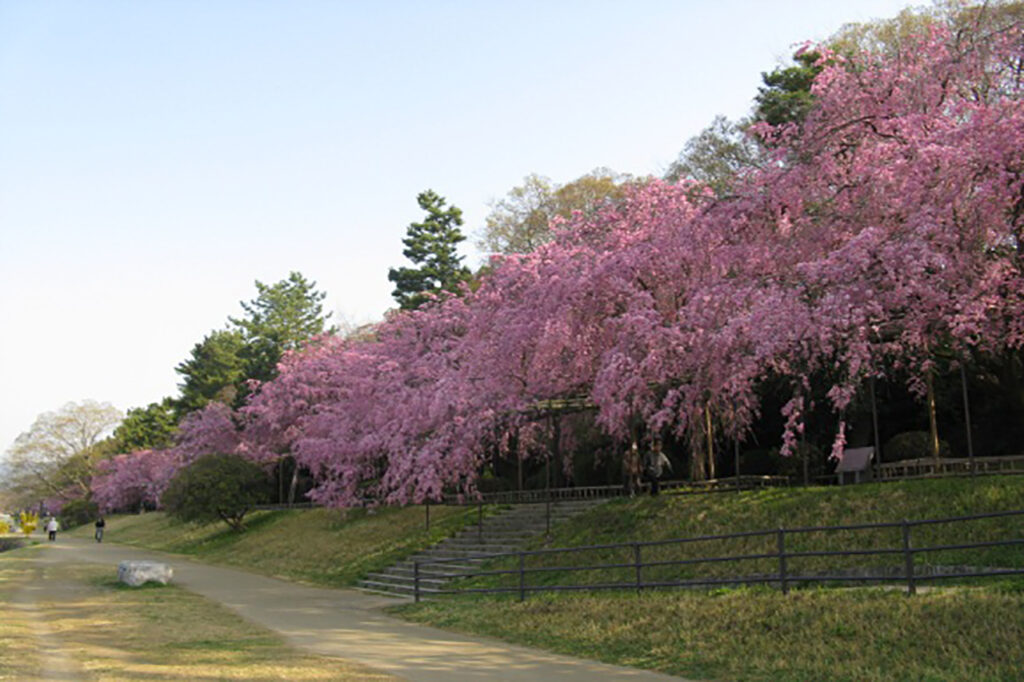

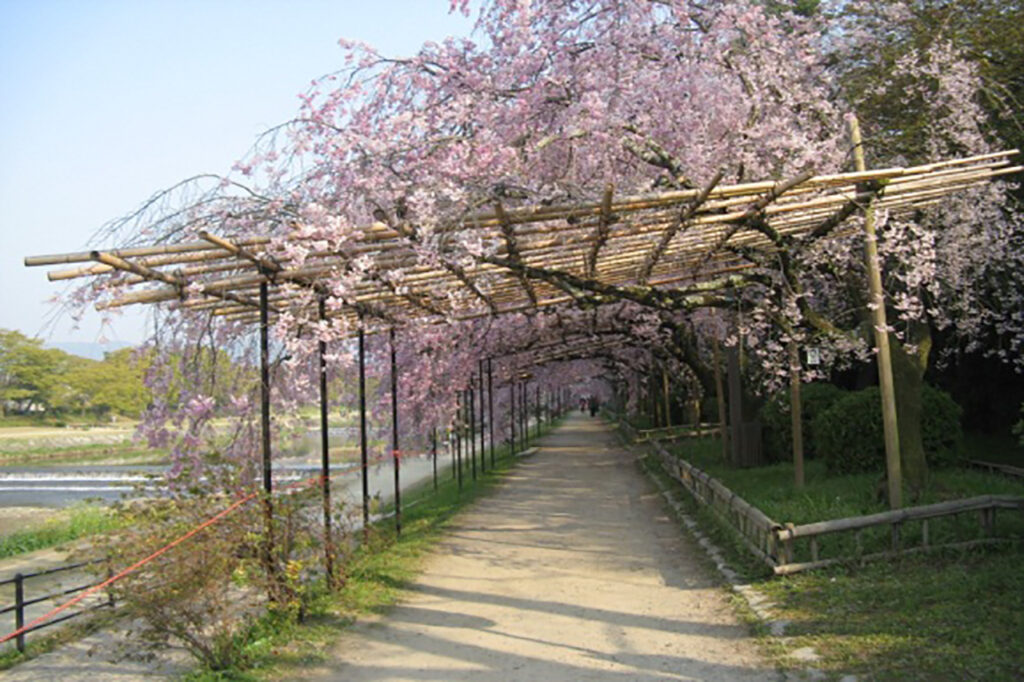

Best viewing time: Early to mid-April
Hours & Fees / Free to explore
Nijo Castle was built by Tokugawa Ieyasu and has been the setting for numerous historical events.
The castle is home to a wide variety of cherry trees, including someiyoshino cherry trees, mountain cherry trees, weeping cherry trees, and satozakura cherry trees, as well as approximately 300 cherry trees in 50 varieties. During the festival, the cherry blossoms are lit up at night and projection mapping is performed in the historical space. Enjoy the World Heritage Site in all its splendor.
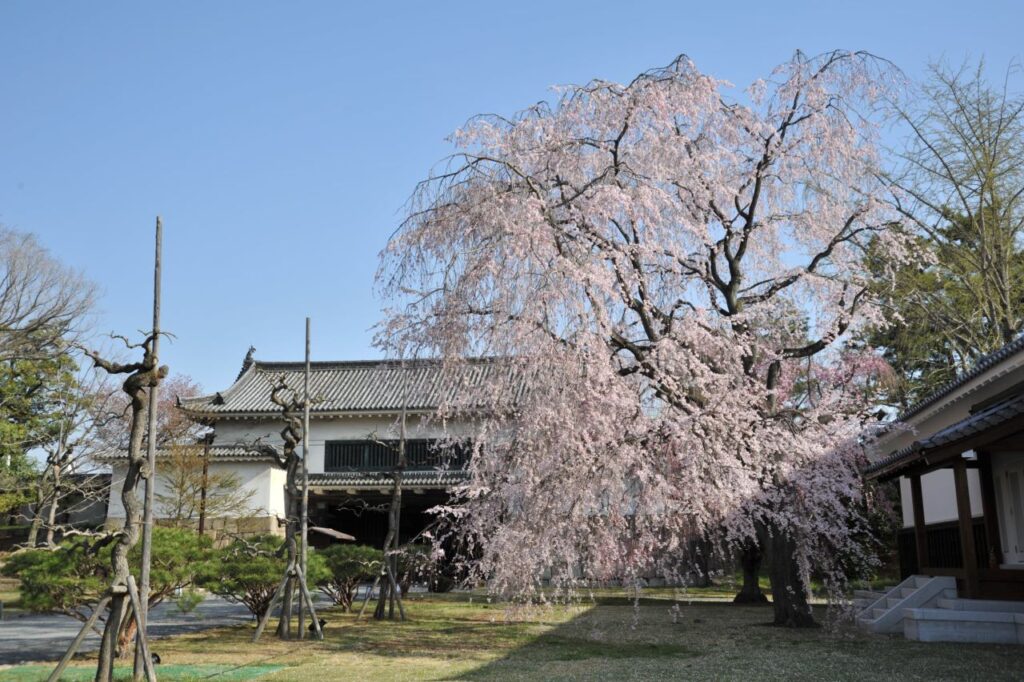

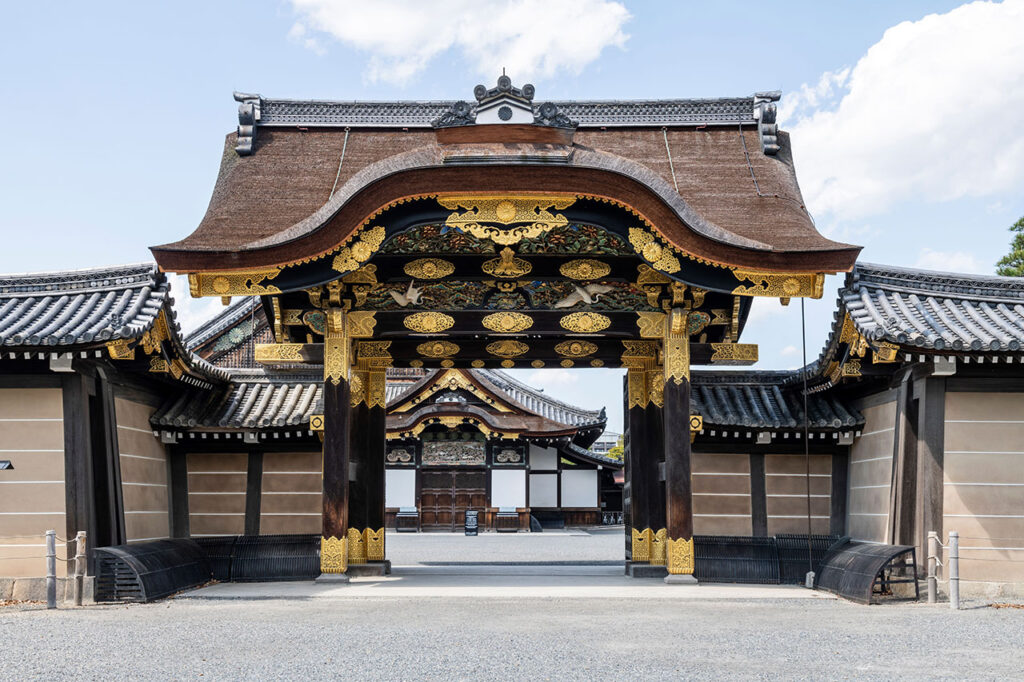

Best time to visit/Mid-March to mid-April (usual)
Opening hours/8:45-16:00 (Closing hours/17:00)
*The Honmaru Palace is currently closed for conservation and repair work.
Ninomaru Palace viewing reception hours/8:45-16:10
Nijo Castle Cherry Blossom Festival 2023
Period / Friday, March 17, 2023 - Saturday, April 15, 2023
Hours/8:45-16:00 (Closing time/17:00)
Admission: Adults 1,300 yen, junior high and high school students 400 yen, elementary school students 300 yen
Including admission to Ninomaru Palace
NAKED FLOWERS 2023 Cherry Blossoms at Nijo Castle, a World Heritage Site
Period / Friday, March 17, 2023 - Saturday, April 15, 2023
Hours/18:00-21:00 (Closing time/22:00)
Admission/ Mon-Thu, junior high school students and older: 1,600 yen, elementary school students: 1,000 yen
Friday-Sunday, national holidays: Junior high school students and older: 2000 yen, Elementary school students: 1400 yen
April 1 & 8: Junior high school students and older: 2,400 yen, Elementary school students: 1,800 yen
The above prices are for advance purchase; additional fees are required for day-of-performance tickets.
*Date-specific tickets for April 1 and 8
Ryoan-ji Temple is an old temple famous for its dry landscape garden called "Ishi-niwa," which expresses the beauty of Zen.
The weeping cherry trees peeking over the wall of the Hojo Garden, a dry landscape stone garden, and the mountain cherry trees and someiyoshino cherry trees moving on the surface of the water of Kagayoike, a garden with a circular garden with a pond, are in full bloom. During the blooming season, approximately 400 cherry trees adorn the grounds of the temple and the cherry blossom garden can be enjoyed.
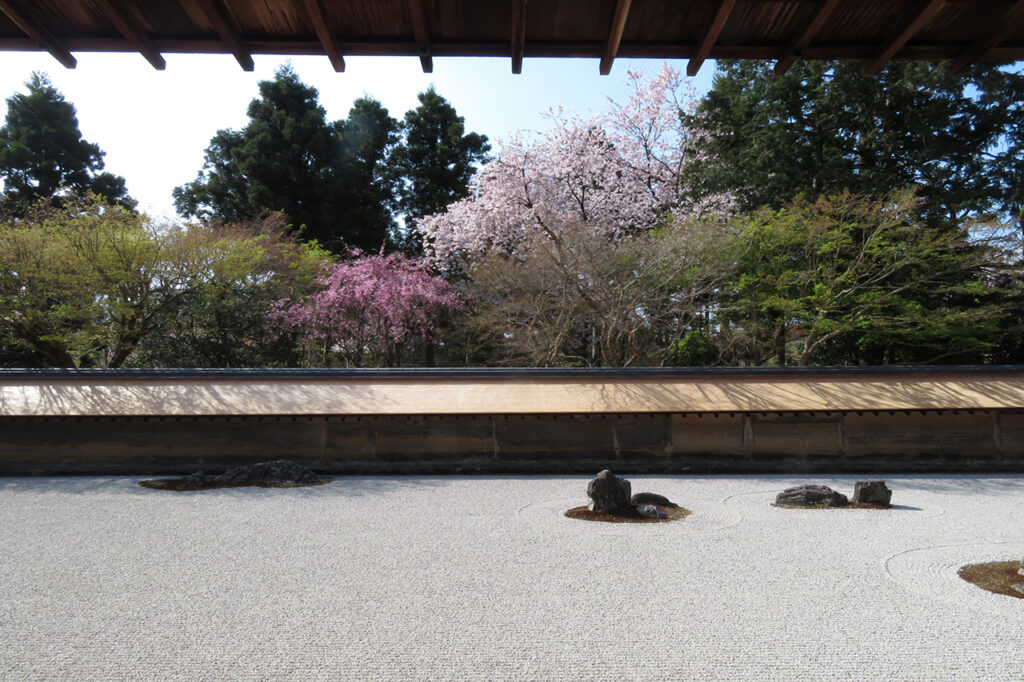
Image courtesy of Ryoanji Temple

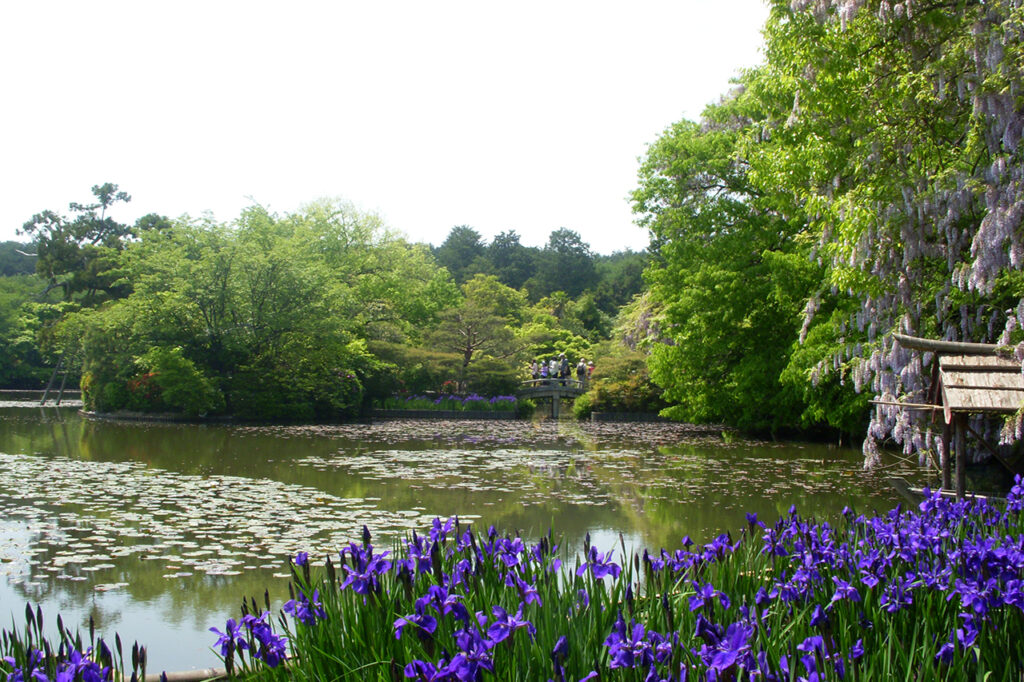
Image courtesy of Ryoanji Temple

Best time to visit: Mid-March to early April
Hours of visitation / 8:30-16:30, 8:00-17:00 from March to November.
Entrance fee / 500 yen (600 yen from April 2023)
It was built in 1339 by Ashikaga Takauji to mourn the loss of Emperor Godaigo.
The Sogen Pond Garden, designated as a historic site and a special place of scenic beauty, was created about 700 years ago by the monk Muso Kokushi, and is surrounded by approximately 200 cherry trees, including weeping cherry trees, someiyoshino cherry trees, and mountain cherry trees. From the hill on the hill, "Mangyo-no-oka", you can enjoy a panoramic view of Kyoto city and the cherry blossoms on the temple grounds, which is also a must-see.
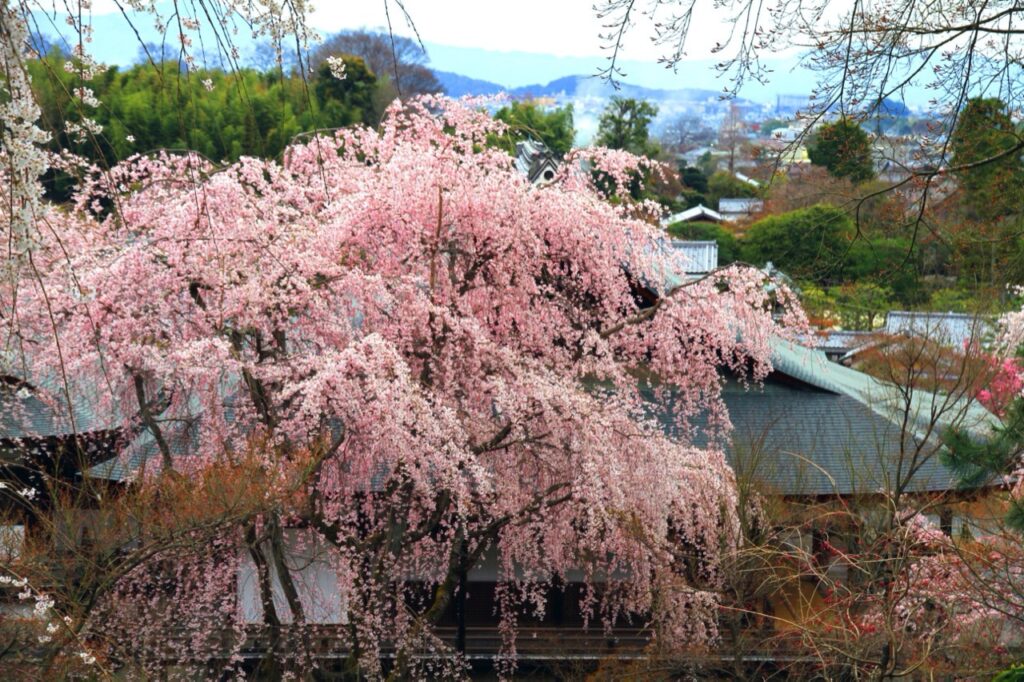

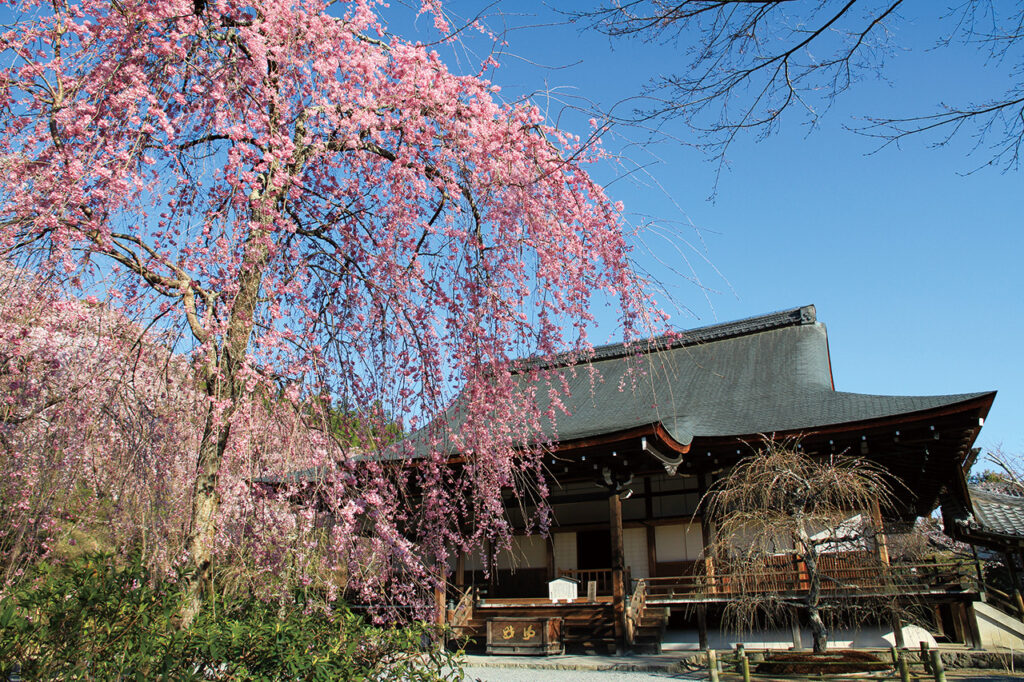

Best time to visit: Late March to mid-April
Garden 8:30-17:00 (Reception closes at 16:50)
Halls 8:30-16:45 (reception closes at 16:30)
Dharma Hall "Dragon and Cloud Viewing" is open Saturdays, Sundays, and national holidays only from 9:00 to 16:30 (reception ends at 16:20)
Open to the public every day during spring, summer, and fall.
Special outdoor seating."
Period / Tuesday, April 4, 2023
Time/10:00-15:00
Entrance fee/500 yen for garden visit *800 yen for green tea is not included
Hirano Shrine is famous for its cherry blossoms, known as "Hirano no Yozakura" (night cherry blossoms of Hirano).
About 400 cherry trees of about 60 varieties are planted on the grounds, including many rare varieties that originated in this area. The blooming time of the cherry trees, including the early-blooming weeping cherry "Kai-zakura", varies from year to year, so visitors can enjoy viewing the cherry blossoms for about a month. During the special nighttime illumination, visitors can enjoy the fantastic scenery of the cherry blossom garden and grounds illuminated by lights such as bonbori (paper lanterns) and lanterns.
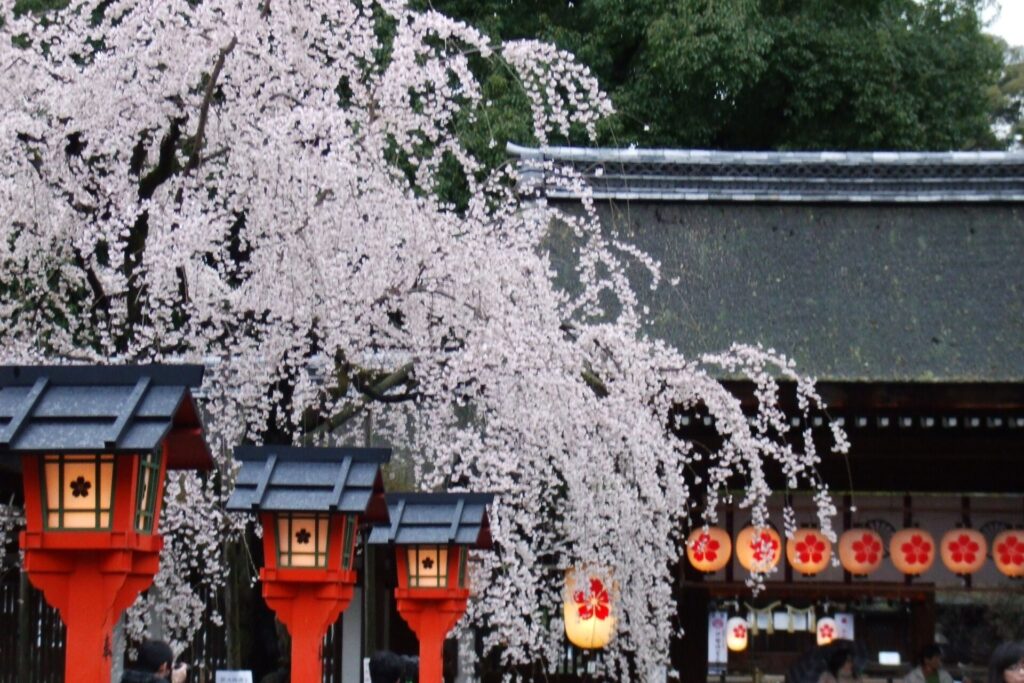

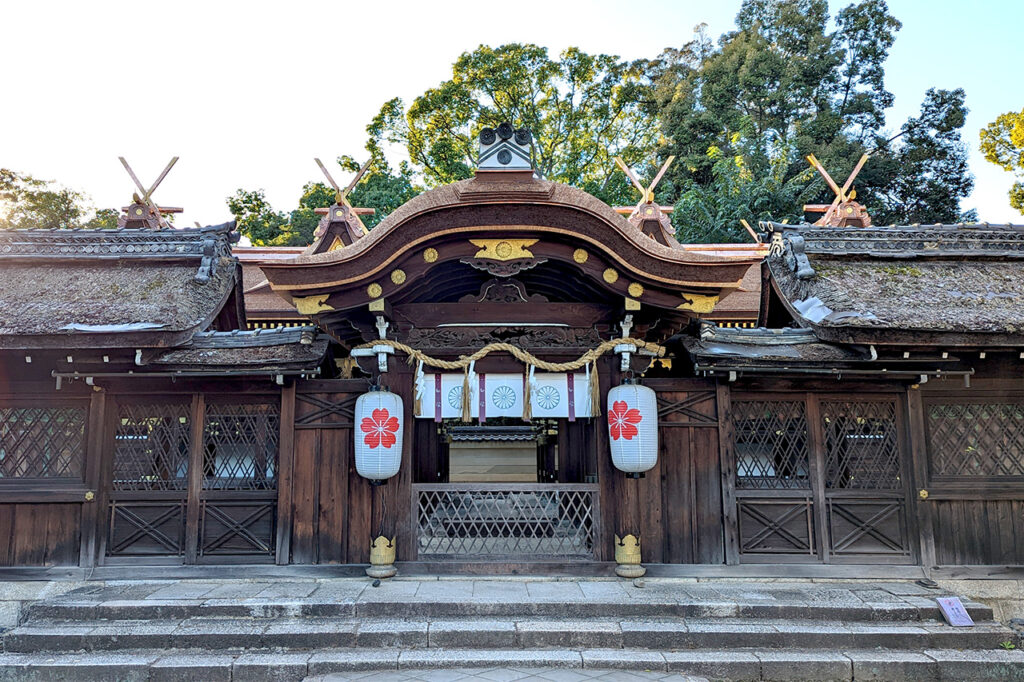

Best time to see: late March to mid-April
Hours of worship/6:00-17:00
Hirano Shrine Night Cherry Blossom Special Visit
Period / March 25 (Saturday) to April 16 (Sunday), 2023
Hours: Sunset - 21:00
Admission: Free (some sections charge a fee)
Daigoji Temple, where Toyotomi Hideyoshi held his "Daigo no Hanami" cherry blossom viewing party, is also known as "Hana no Daigo," a famous cherry blossom viewing spot.
Approximately 700 cherry trees, including weeping cherry trees, someiyoshino cherry trees, mountain cherry trees, and double-flowered cherry trees, are in full bloom in turn, making cherry blossom viewing enjoyable over a long period of time. In addition, the Reihokan, which houses many cultural properties, holds a special spring exhibition every year. From among approximately 75,000 national treasures and 430 important cultural properties, temple treasures are exhibited according to themes.
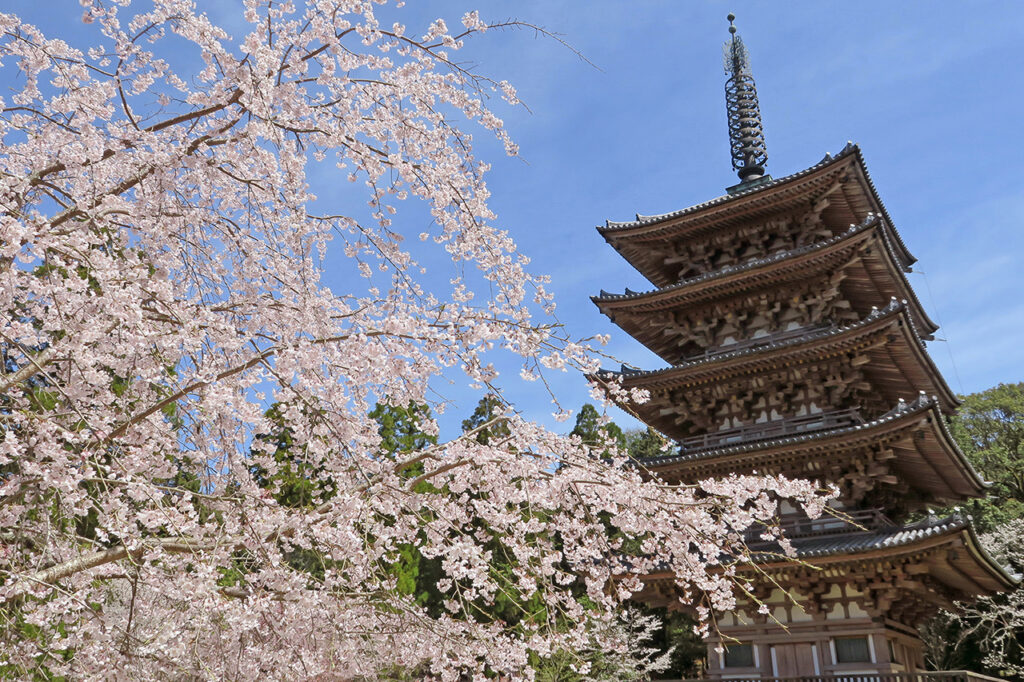

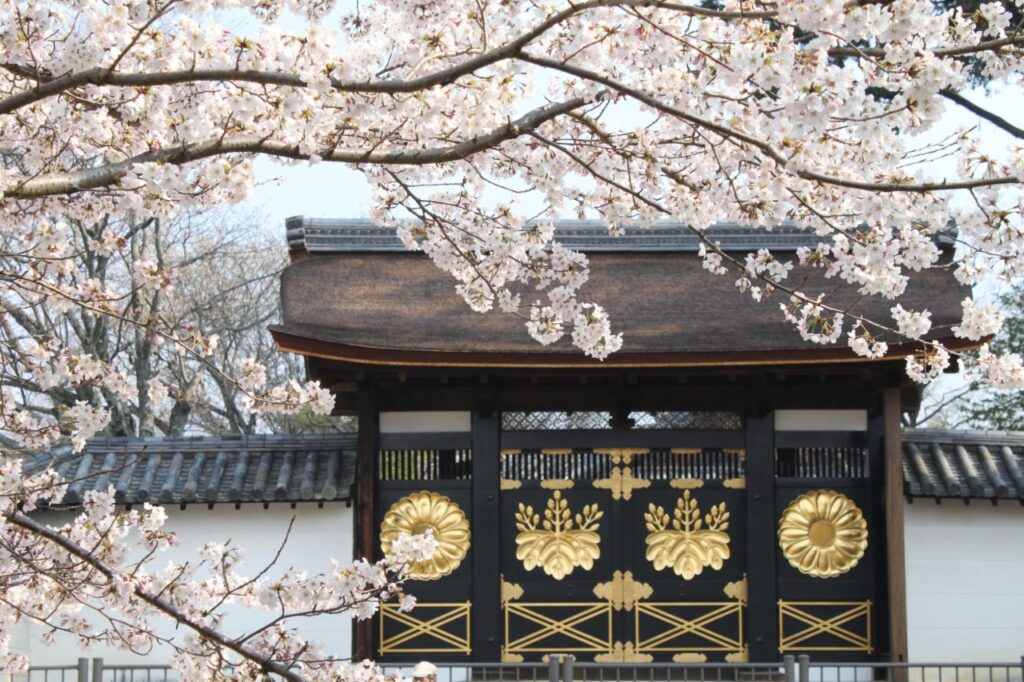

Best time to see: late March to early April
Visiting hours/9:00-17:00 (Last entry/16:30)
Admission fee: March 20th (Monday) to the last day of Golden Week: Adults 1,500 yen, junior high and high school students 1,000 yen (Samboin Garden, Garan, Reihokan Garden)
"Reihokan Spring Special Exhibition Daigoji Temple with Dancing Cherry Blossoms -Hanami of Hideyoshi Taiko-"
Period: Monday, March 20, 2023 to Sunday, April 23, 2023 *Closed from Wednesday, April 5 to Friday, April 7
Time/9:00-17:00 (Last entry/16:30)
Admission fee/Cultural property maintenance donation 500 yen
*Additional admission fee of 1,500 yen for adults and 1,000 yen for middle and high school students (Samboin Garden, Garan, Reihokan Garden) is required.
The Myoshin-ji Retreat House is located just west of the south main gate of Myoshin-ji Temple.
The famous weeping cherry tree was planted about 50 years ago, when the famous garden, Yokoen, was completed. It is the granddaughter of the red weeping cherry tree at Heian Shrine, and the gradation of the color of its petals as the days go by is spectacular. When the cherry blossoms fall, "Hanafubuki", which looks like a shower of cherry blossoms, is also a beautiful sight to behold.
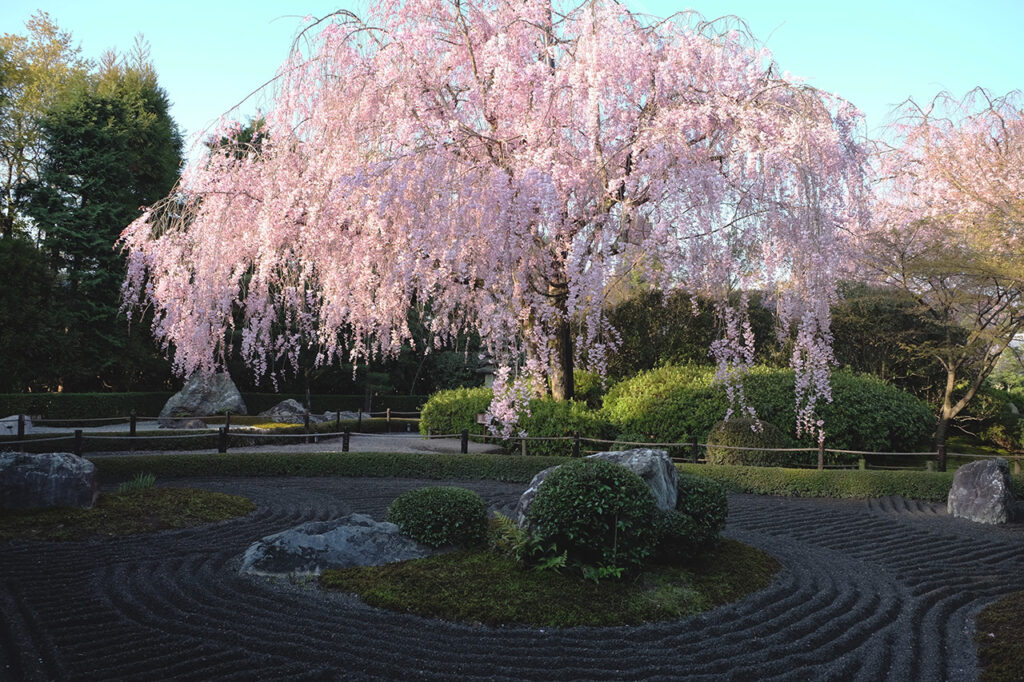
Image courtesy of Chizoin, the pagoda of Myoshinji Temple

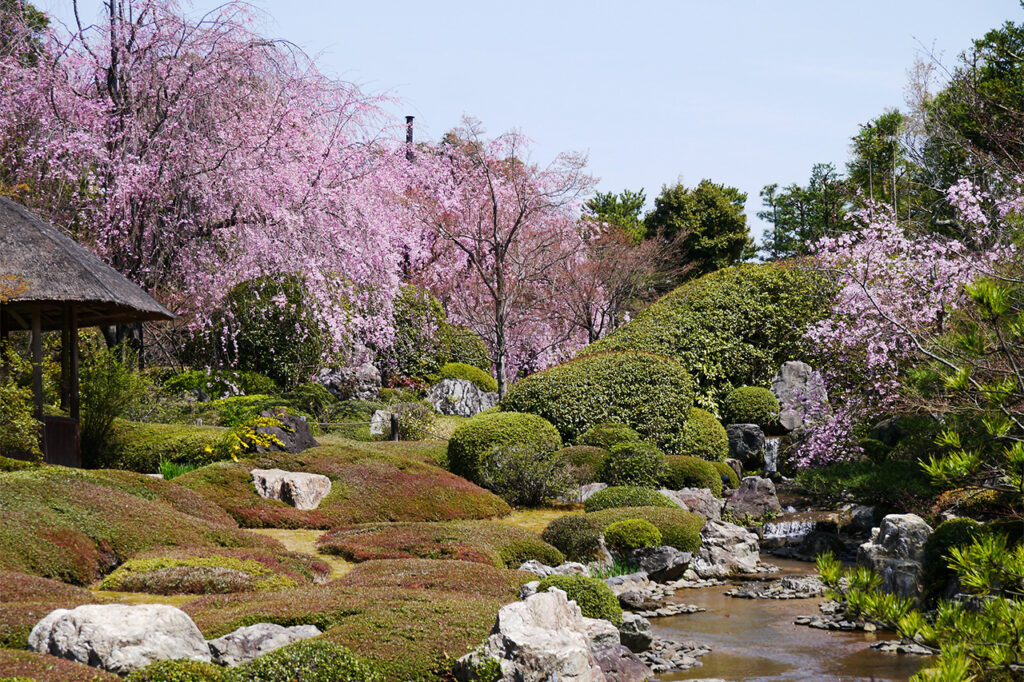
Image courtesy of Chizoin, the pagoda of Myoshinji Temple

Best time to see: late March to early April
Visiting hours/9:00-17:00 (last reception)
Admission fee: 600 yen for adults, 300 yen for elementary and junior high school students
The largest vermilion Otorii (Grand Gate) in Kyoto towers over the shrine [Heian Jingu Shrine].
About 300 cherry trees, including red weeping cherry trees and someiyoshino cherry trees, are planted here, which contrast beautifully with the vermilion color of the Otorii gate and the shrine pavilions. Every year, a "cherry blossom viewing tea ceremony" is held during the peak of the cherry blossom season, and tea tables are set up. In the evening, for the first time in four years, the "Benishidare Concert" will be held, a traditional event that adds color to spring in Kyoto. Gagaku (ancient Japanese court music), piano, and violin will be performed, offering an extraordinary experience.
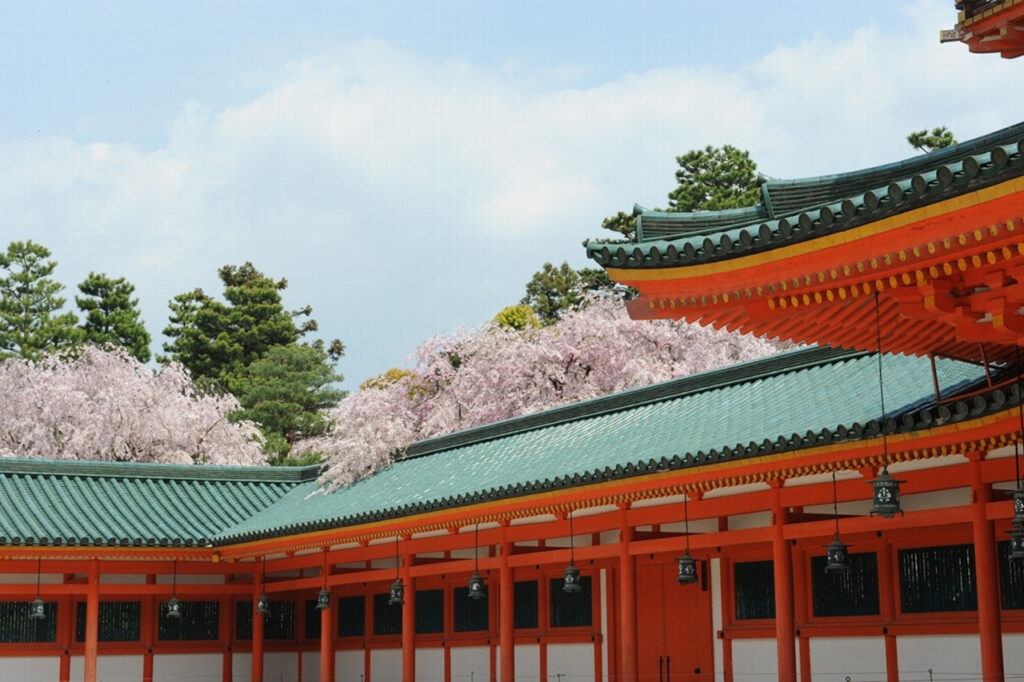

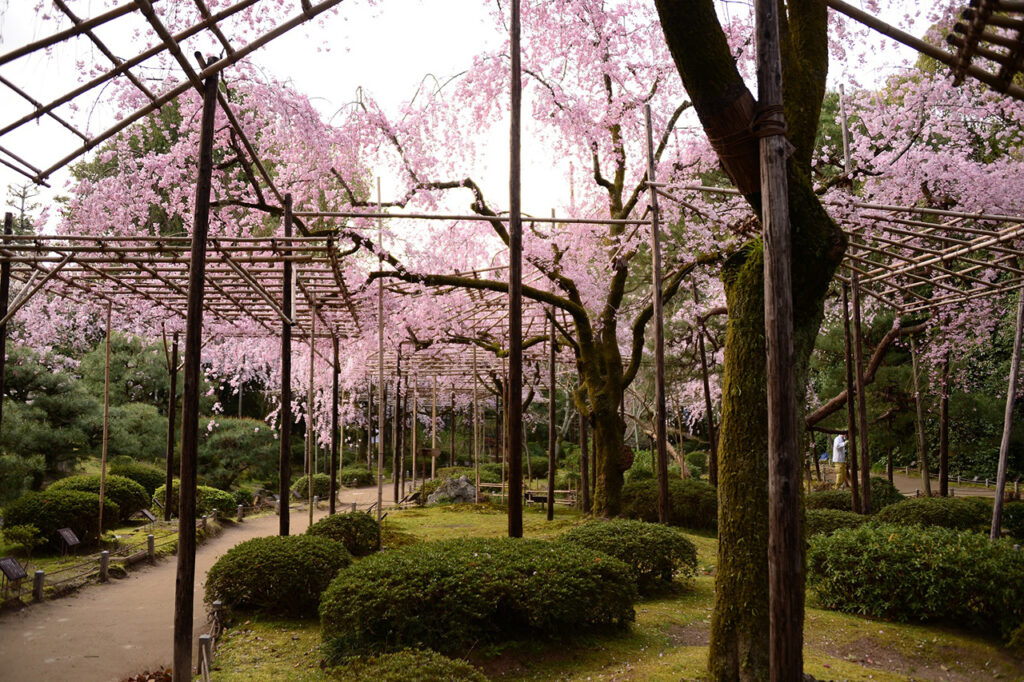

Best time to see: late March to mid-April
Visiting hours may change depending on the season. Detail isHPsee
"Cherry Blossom Viewing Tea Ceremony"
Period: Sunday, March 26, 2023, Thursday, March 30, 2023 to Sunday, April 9, 2023
Hours/Tea Ceremony 9:00-16:00, Shinen Garden 8:30-17:30
Fee: Tea ticket 1,000 yen *Separate entrance fee to Shinen Garden: Adults 600 yen, Children 300 yen
"Heian Jingu Shrine Sakura Otoyo Red Weeping Concert 2023"
Time/18:15-21:00 (Last entry/20:30)
*Two shifts from 18:40 to 19:20 and 19:50 to 20:30
*Implemented in an excursion style without replacement
*No seats
Fee: 3,500 yen for adults, 3,000 yen for elementary school students
Advance ticket: 2,500 yen for adults, 2,000 yen for elementary school students
The name [Philosopher's Path] comes from the fact that philosophers and literary figures strolled along it.
The 2-km-long walking path along the Sosui that runs from Wakaoji-bashi Bridge to Jodoji-bashi Bridge has been selected as one of the "100 best paths in Japan. About 400 Someiyoshino cherry trees and others are planted along both banks of the Sosui, and when they are in full bloom, it looks like a tunnel of cherry blossoms.
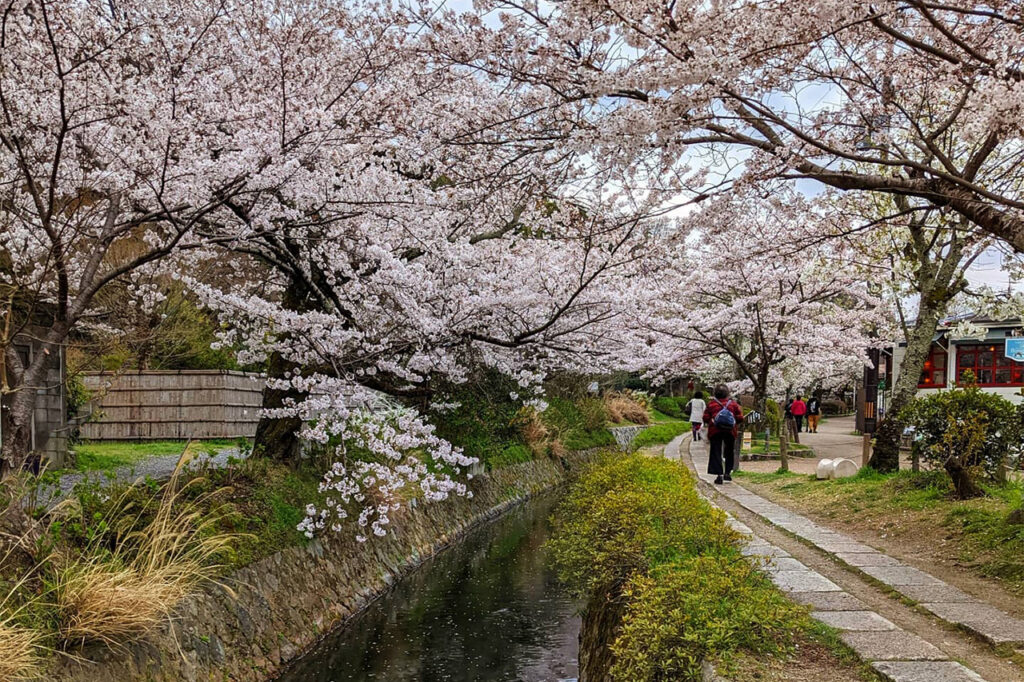

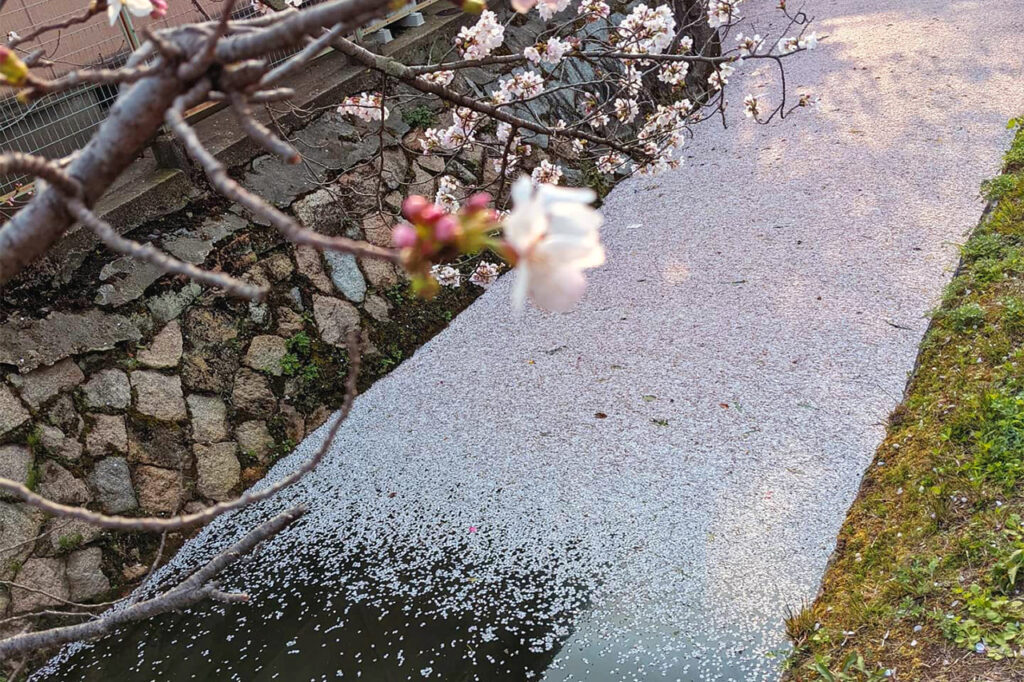

Best time to see: late March to early April
Admission Hours and Admission Fee / Free to visit
[The Kyoto Gyoen (Kyoto Imperial Garden), a public house town in the vicinity of the Kyoto Imperial Palace, was developed and opened to the public as a park.]
About 1,000 cherry trees, including weeping cherry trees, Kuruma-zakura, and mountain cherry trees, are planted in the national park, which is rich in nature. The two most famous cherry trees are the "Izumi no edarezakura" and the "Chikamori no edarezakura. The early-blooming "Izumi no edarezakura" is a popular photo spot because of its beautiful shape, which resembles a spreading umbrella. From late March, about 60 large weeping cherry trees (itozakura) at the Chikamori Residence Site bloom in a beautiful gradation of colors, from light to dark. (Blue sheets are not allowed).
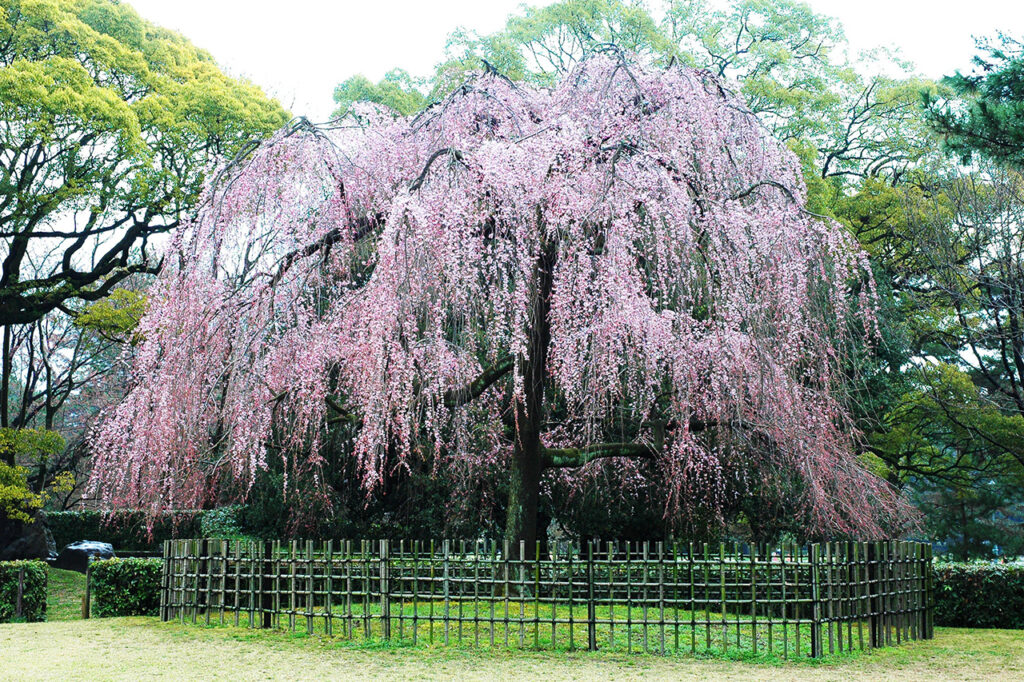
Image courtesy of Kyoto Gyoen Management Office, Ministry of the Environment

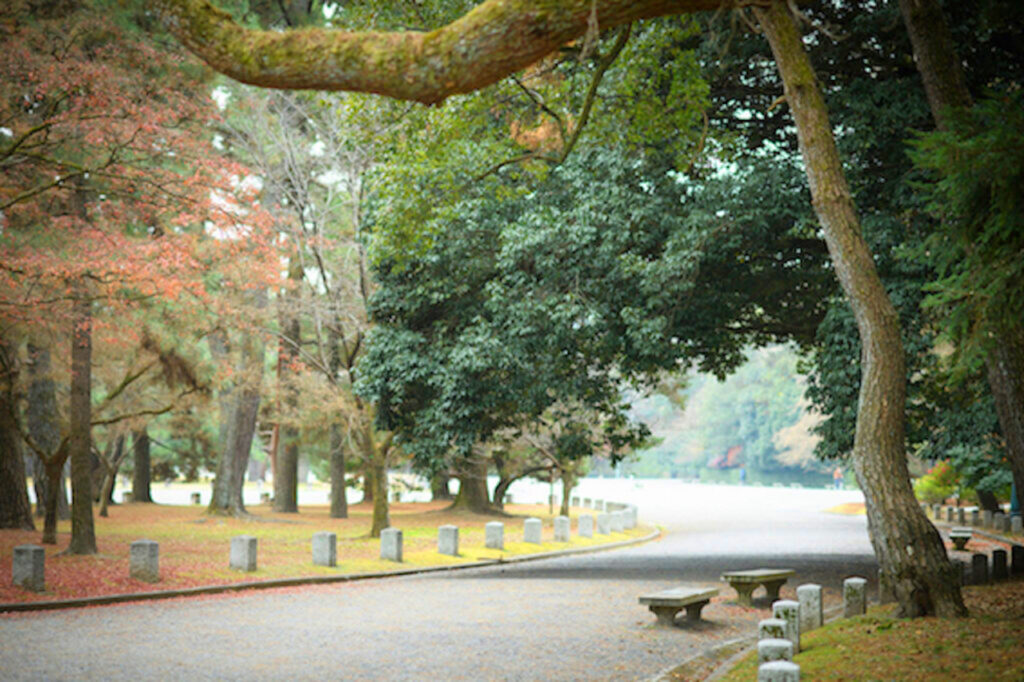

Best time to visit: Late March to mid-April
Admission Hours and Admission Fees / Free in the park
Kiyomizu Temple is one of the representative temples of Kyoto.
In December 2020, the roof was re-thatched for the first time in half a century, and the main hall, known as the stage of Kiyomizu, was redecorated. The grounds of the temple are filled with approximately 1,000 wild cherry trees and someiyoshino cherry trees, and the view from the main hall is exceptionally beautiful. The view from the main hall is exceptionally beautiful. During the special nighttime viewing in spring, visitors can enjoy the ethereal scenery of the main hall surrounded by illuminated cherry blossoms at night.
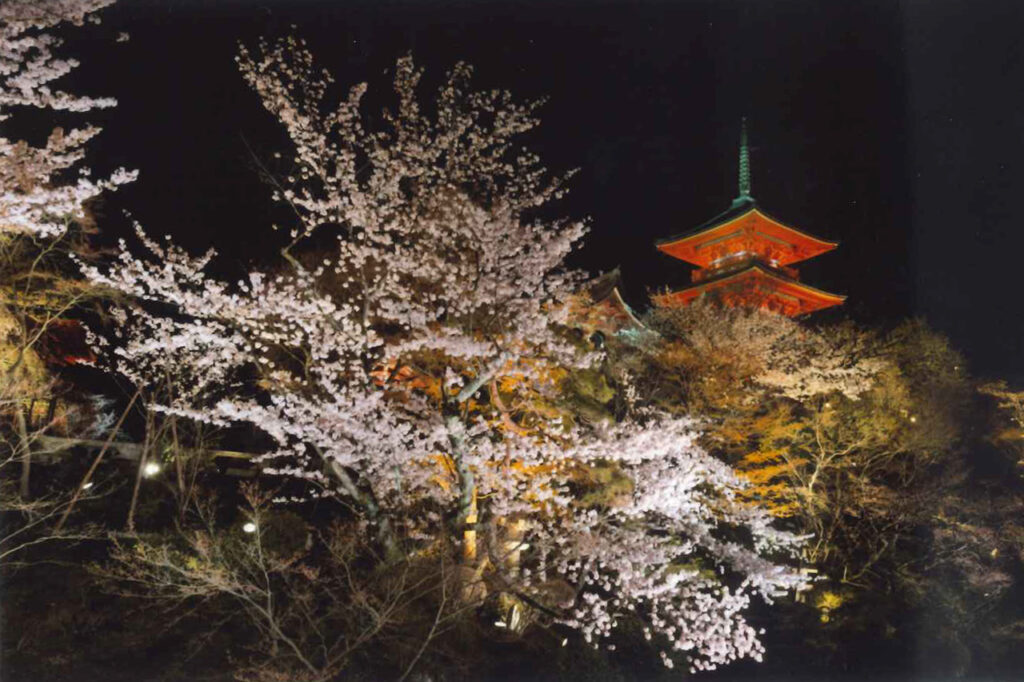

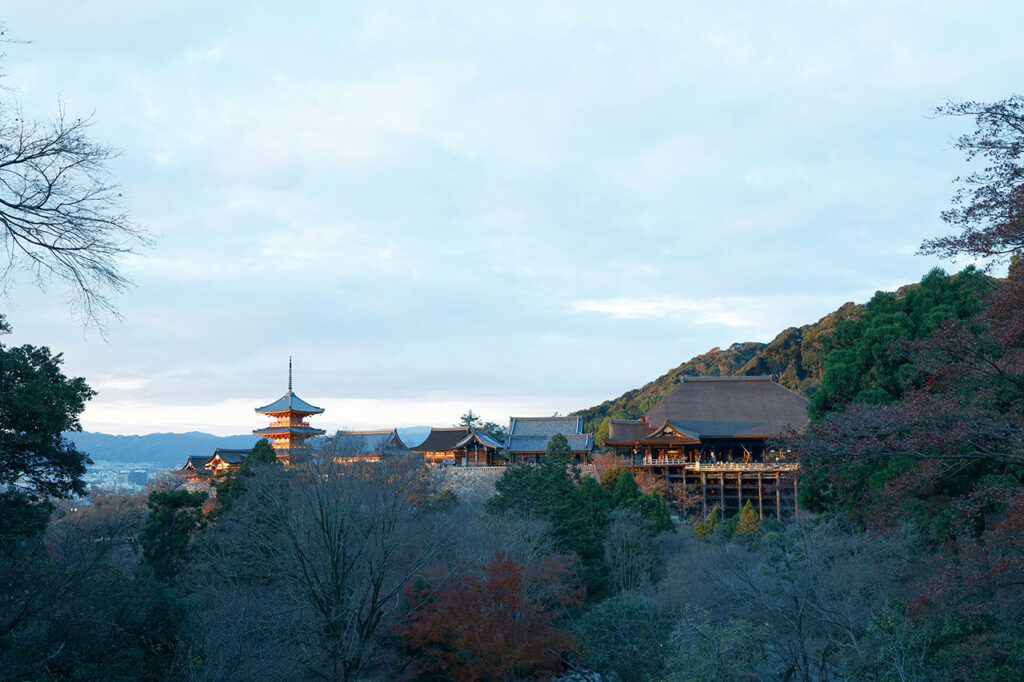

Best time to see: late March to early April
Hours of visitation/6:00-18:00
Special Nighttime Viewing
Period / March 25, 2023 (Sat) - April 2, 2023 (Sun)
Hours/18:00 (receptionist/17:45) - 21:30 (last admission/21:00)
Entrance fee: 400 yen for adults, 200 yen for elementary and junior high school students
Maruyama Park, the oldest park in Kyoto, opened in 1886.
The grounds are a circular Japanese garden, dotted with restaurants and teahouses. The park is known as one of the best cherry blossom viewing spots in Kyoto, with approximately 680 cherry trees, including weeping cherry trees, someiyoshino cherry trees, and mountain cherry trees, and the entire park is decorated with cherry blossoms during the cherry blossom viewing season. In the center of the park is an 80-year-old second-generation weeping cherry tree, which is famous as the "Gion no Yozakura" (cherry blossoms at night in Gion) when it is illuminated. Hanami teahouses are also available for visitors to relax and enjoy the cherry blossoms.
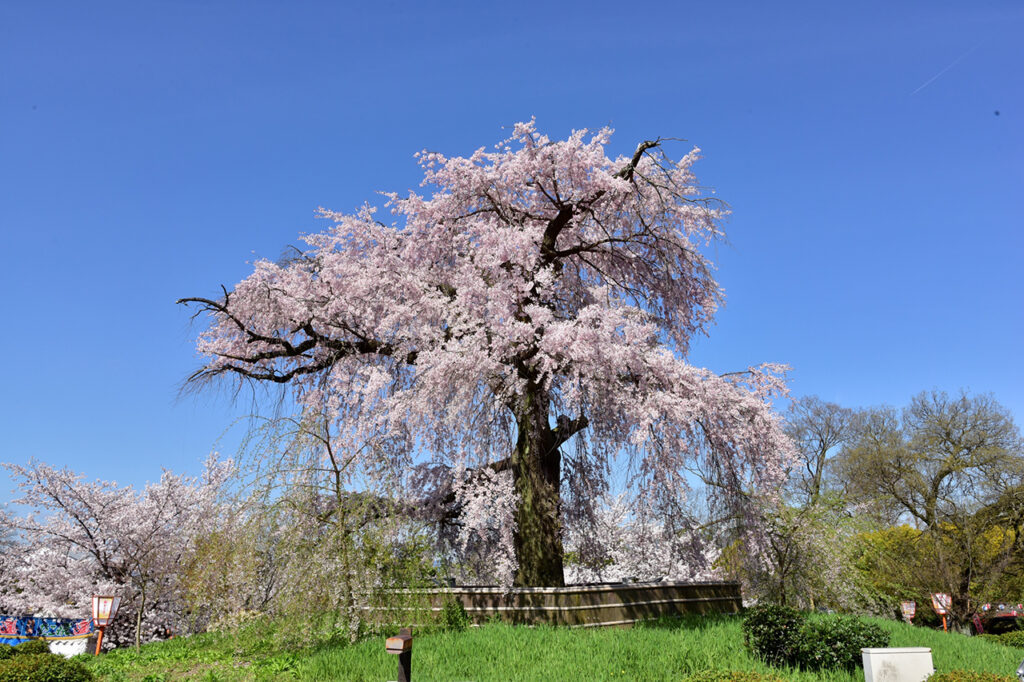

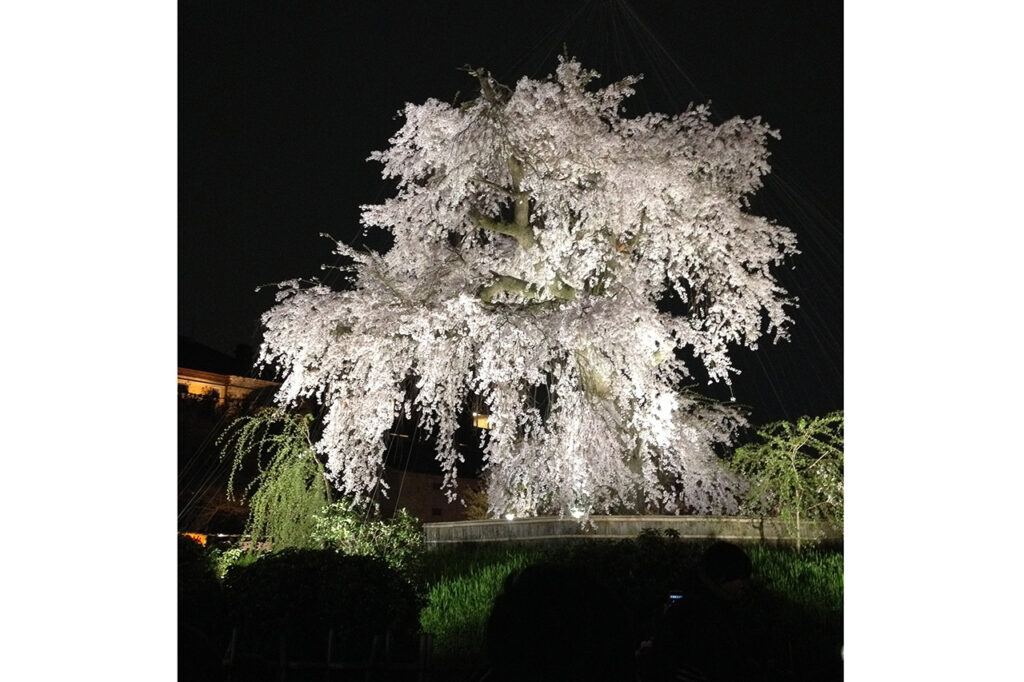

Best time to see: late March to early April
Entry hours / Free in the park
Shidare-zakura lights up.
Period / Friday, March 24, 2023 - Sunday, April 9, 2023
Hours/18:00-22:00
(the public) is free to use the premises
The head temple of the Jodo sect [Chion-in]. The rows of cherry blossom trees can be seen over a wide area from Higashiyama Hwacho-san to Higashioji-dori. During the illumination of the gate in late March, visitors can climb up to the top of the gate for the first time in nine years during the spring season. In addition, the Yuzen-en Garden, with its magnificent weeping cherry blossoms, and other areas of the temple grounds will also be illuminated.
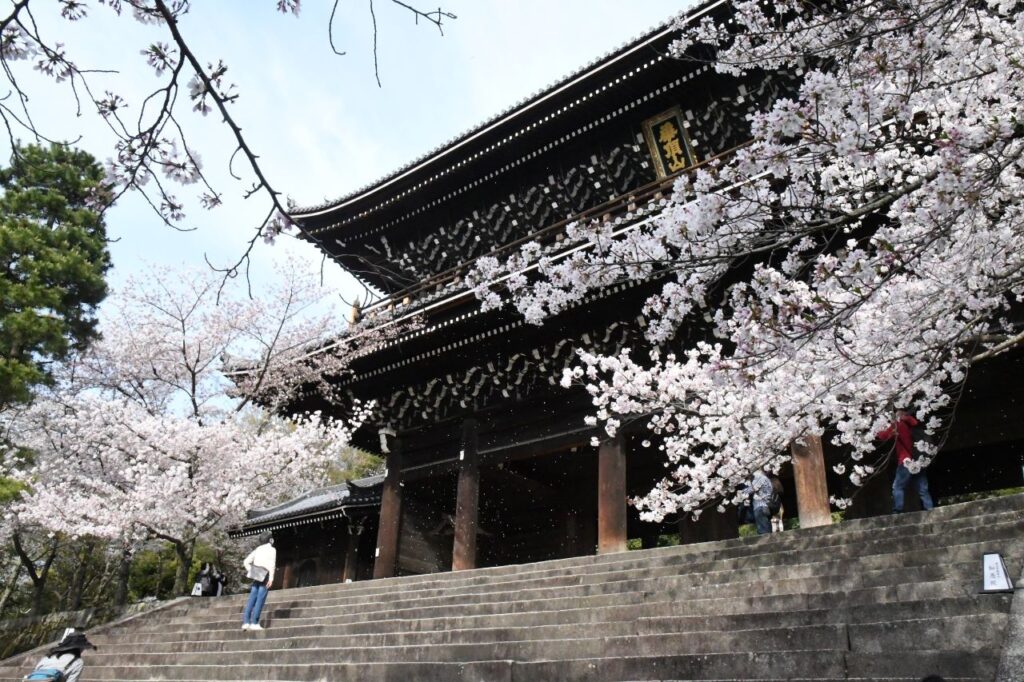

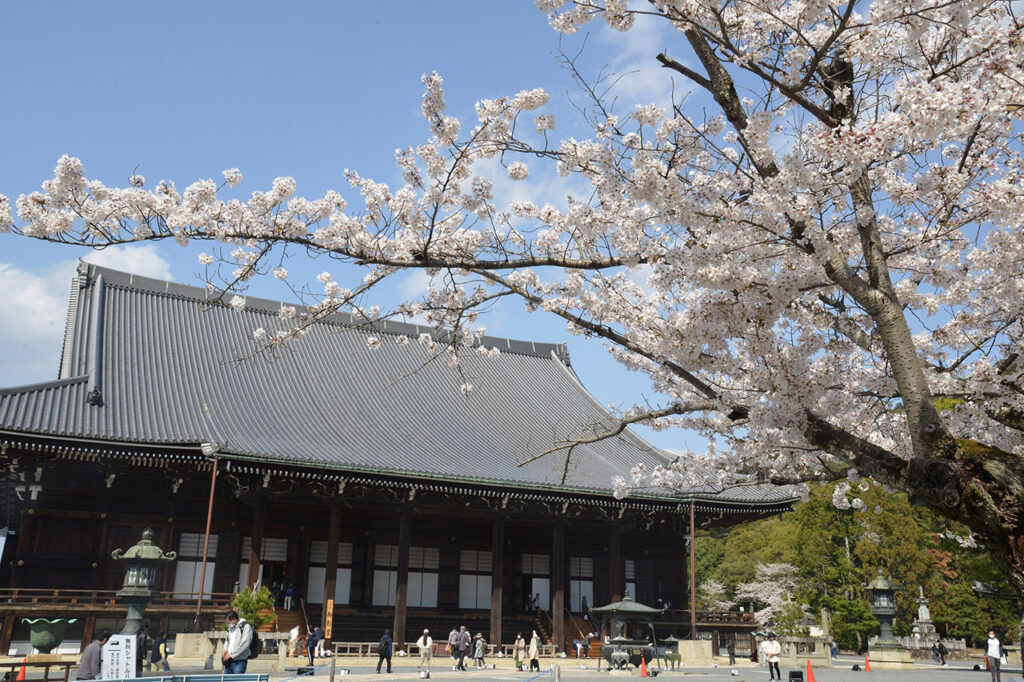

Best time to see: late March to early April
Hours: Yuzen-en 9:00-16:00, Hojo Garden 9:00-15:50
* Common ticket sales ~ 15:20
*Gate closes at 16:30
"Chion-in Spring Illumination 2023"
Period: Friday, March 24, 2023 to Sunday, April 2, 2023
Hours: 17:45-21:30 (reception closes at 21:00)
Admission fee: 800 yen for adults, 400 yen for elementary and junior high school students
Toji Temple was founded as a temple to protect the nation.
The five-story pagoda, a national treasure, is one of the symbolic landscapes of Kyoto. About 200 cherry trees, including Someiyoshino cherry trees, are planted in the precincts of the temple. The "Fuji-zakura," a beautiful red weeping cherry tree said to be 130 years old, comes from Morioka City, Iwate Prefecture. Enjoy the beautiful contrast between the five-story pagoda, the tallest in Japan, and the Fuji-zakura.
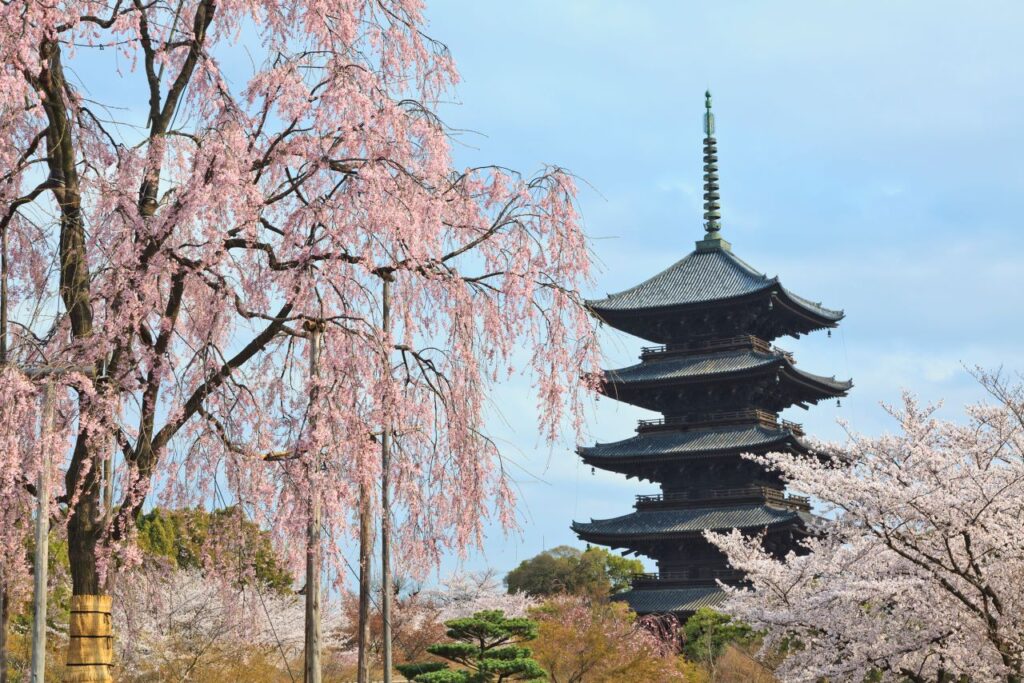

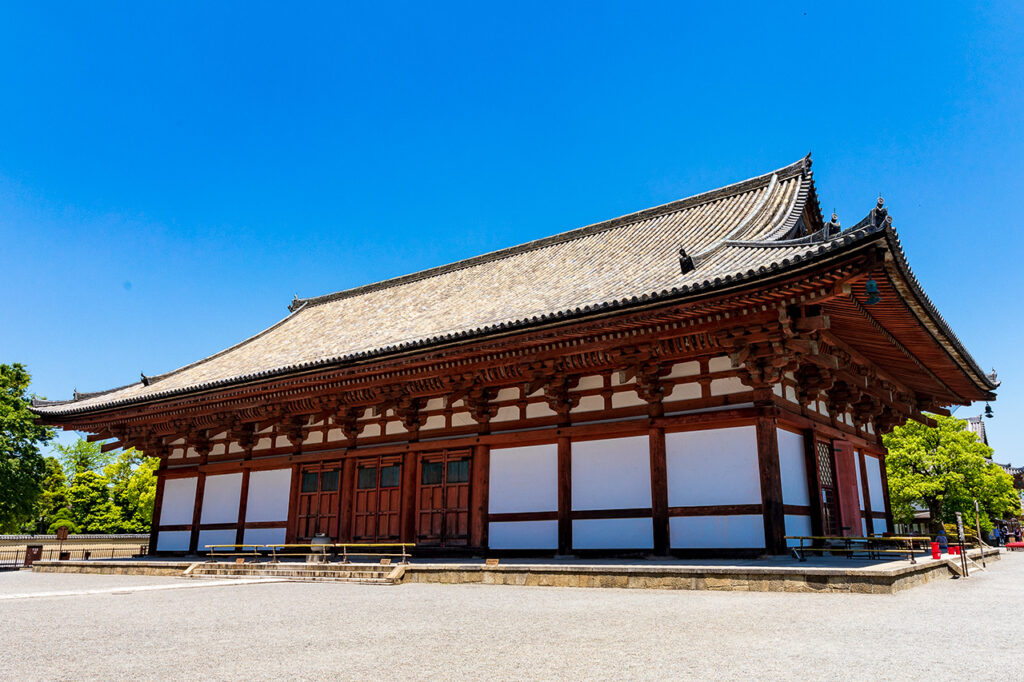
After enjoying the cherry blossoms in the garden, you can appreciate the majestic Buddha statues in the main hall, lecture hall, and dining hall near the Hytan Pond.

Best time to see: late March to early April
Visiting hours/Kondo, Auditorium 8:00-17:00 (Reception ends/16:30)
Treasure Museum, Kanchi-in Temple 9:00-17:00 (reception closes at 16:30)
*Gates open from 5:00 to 17:00
Treasure House Spring Special Open House
Period / Monday, March 20, 2023 - Thursday, May 25, 2023
Hours: 9:00 - 17:00 (Registration closes at 16:30)
Admission: Adults 500 yen, Junior high school students and younger 300 yen
Cherry blossoms illuminated at night (Kondo and Kodo special nighttime viewing)
Period / March 18 (Saturday) to April 16 (Sunday), 2023
Time/18:00 - 21:30 (Registration closes at 21:00)
Entrance fee: 1,000 yen for adults, 500 yen for junior high school students and younger
Kodaidera Temple was built by Kotaisho, or Kita Masasho's wife, Nene, as a memorial to Hideyoshi Toyotomi and as a final resting place for her own family.
The weeping cherry trees in front of the Hojo and Hashinniwa gardens are beautifully set up during the spring special viewing period, adding to the splendor of the garden. At 5:00 p.m., the entire grounds of the temple are lit up, creating a fantastic scene that differs from that of the daytime.
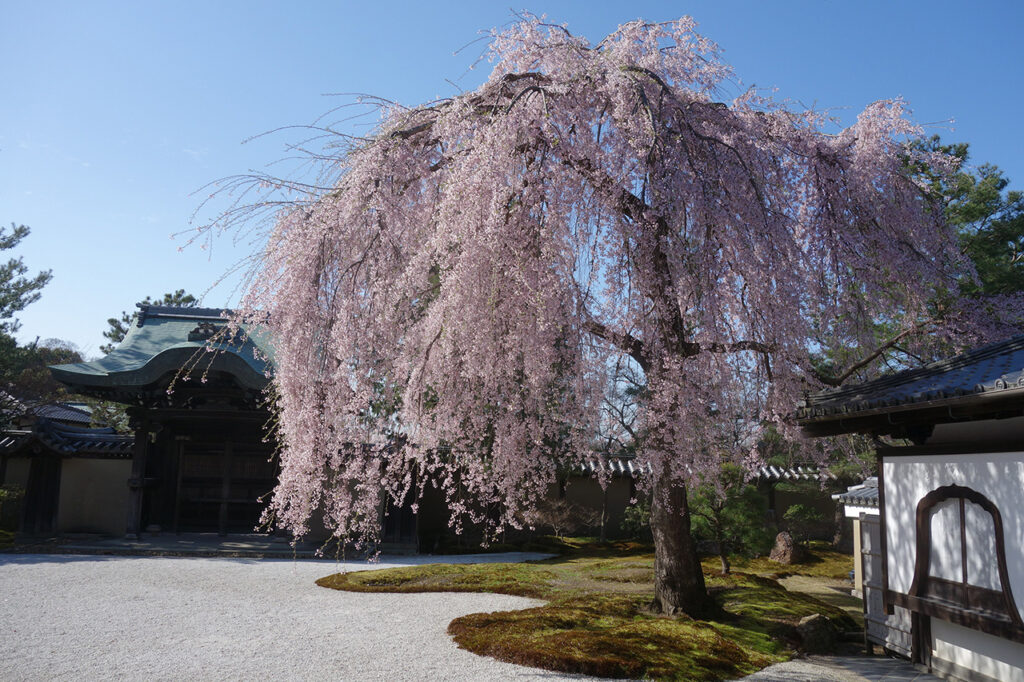

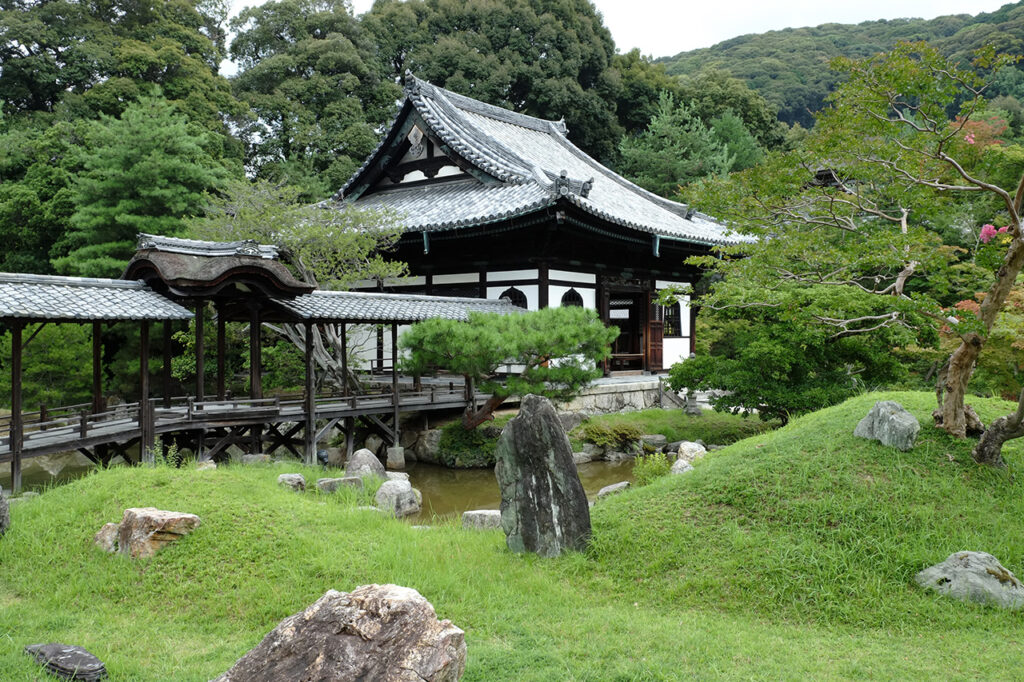

Best time to visit: Early March to late April
Visiting hours: 9:00-17:30 (Reception closes at 17:00)
Spring Night Special Viewing in 2023
Period / Friday, March 17, 2023 - Sunday, May 7, 2023
Time/17:00-22:00 (reception ends/21:30) *No changeover
Admission/ Adults 600 yen (with admission ticket to Palm Art Museum), Junior high and high school students 250 yen
Discounted tickets for two temples (Kodaiji Temple, Palm Art Museum and Entokuin Temple): 900 yen
Kurumaori Shrine is dedicated to Kiyohara Yoriyoshi, a Confucian scholar of the Heian period.
The temple is so deeply connected with cherry blossoms that there is an anecdote that Yoriyoshi Kiyohara loved cherry blossoms so much that he died in the temple. The attraction of this area is that visitors can enjoy the cherry blossoms from early March to late April, with 40 cherry trees of about 15 different varieties, including Kawazu-zakura, Kanhizakura, Keisen-zakura, and Yohkoh.
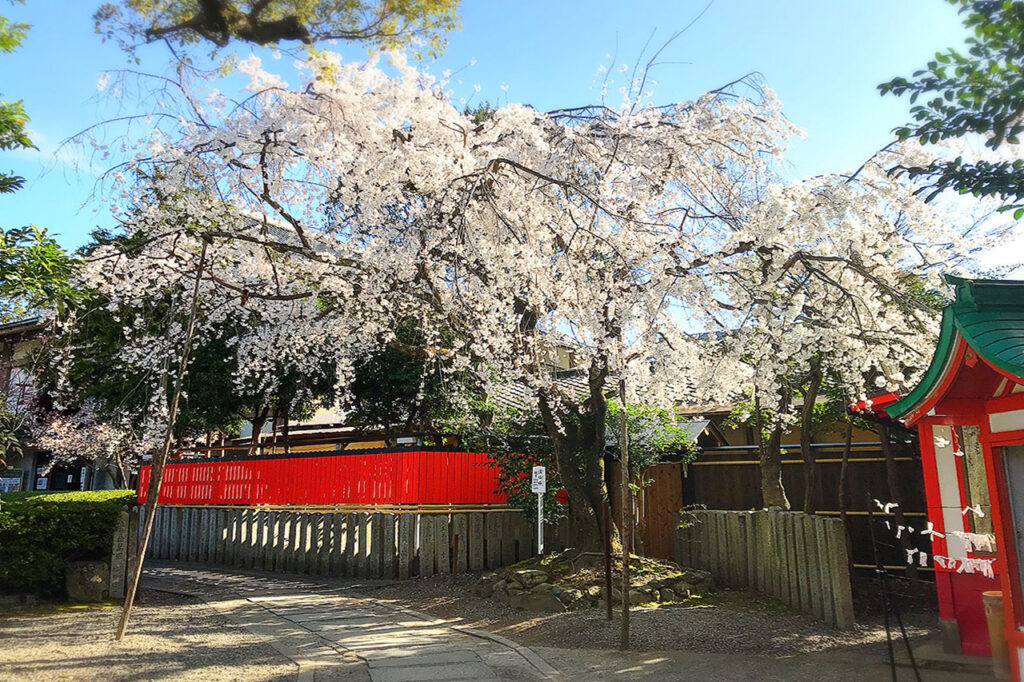

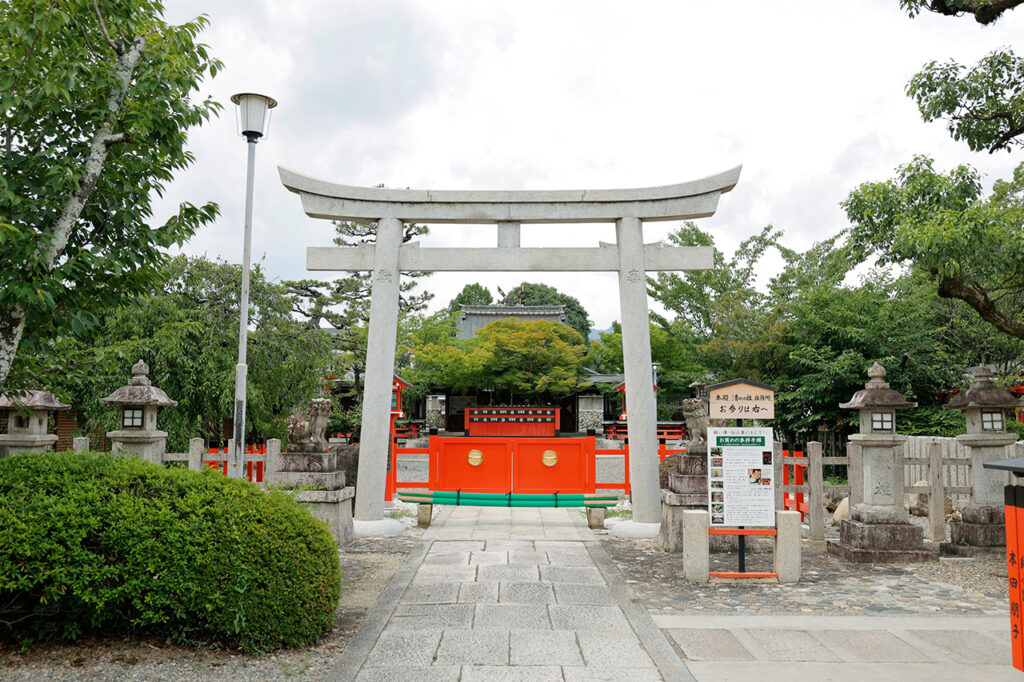

Best time to visit: Early March to late April
Hours of visitation/9:30-17:00
Entrance fee/free in the precincts
The area along the Shirakawa River that runs from Higashiyama to the Gion area is called "Gion Shirakawa. In particular, the area around Tatsumi Bridge and Tatsumi Daimeishin Shrine in Gion, where stone-paved streets are lined with town houses with red latticework, is called "Gion Shinbashi" and is an Important Preservation District for Groups of Traditional Buildings.
It is one of Kyoto's representative spots often used for filming. In spring, someiyoshino cherry trees and weeping cherry trees are in full bloom, creating a scene that is reminiscent of Kyoto. At night, the area is illuminated, creating a different, more glamorous atmosphere than in the daytime.
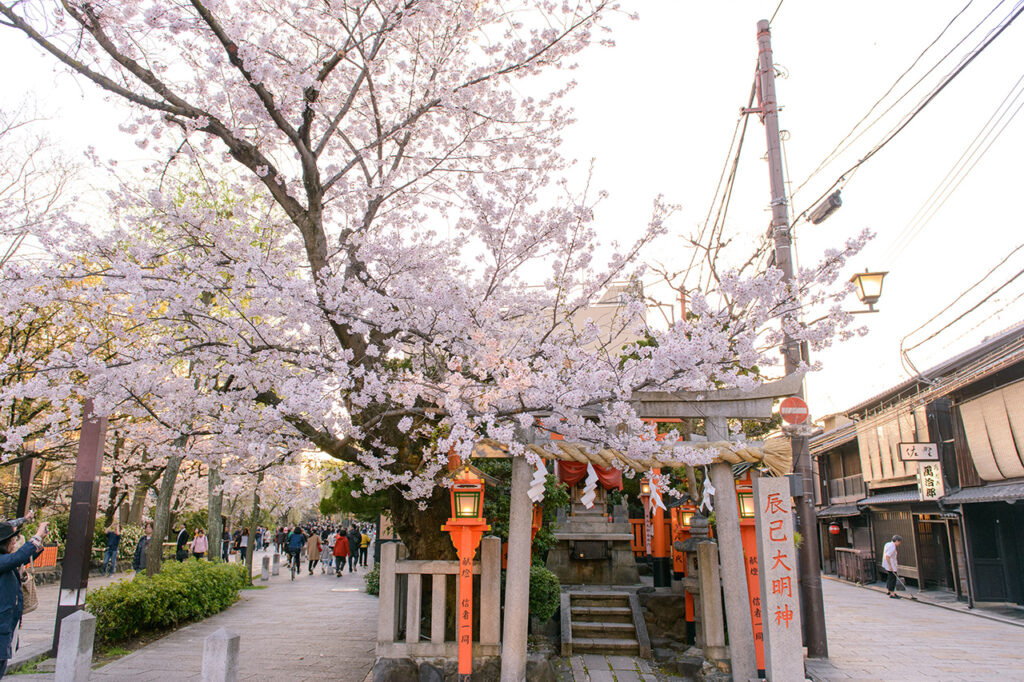

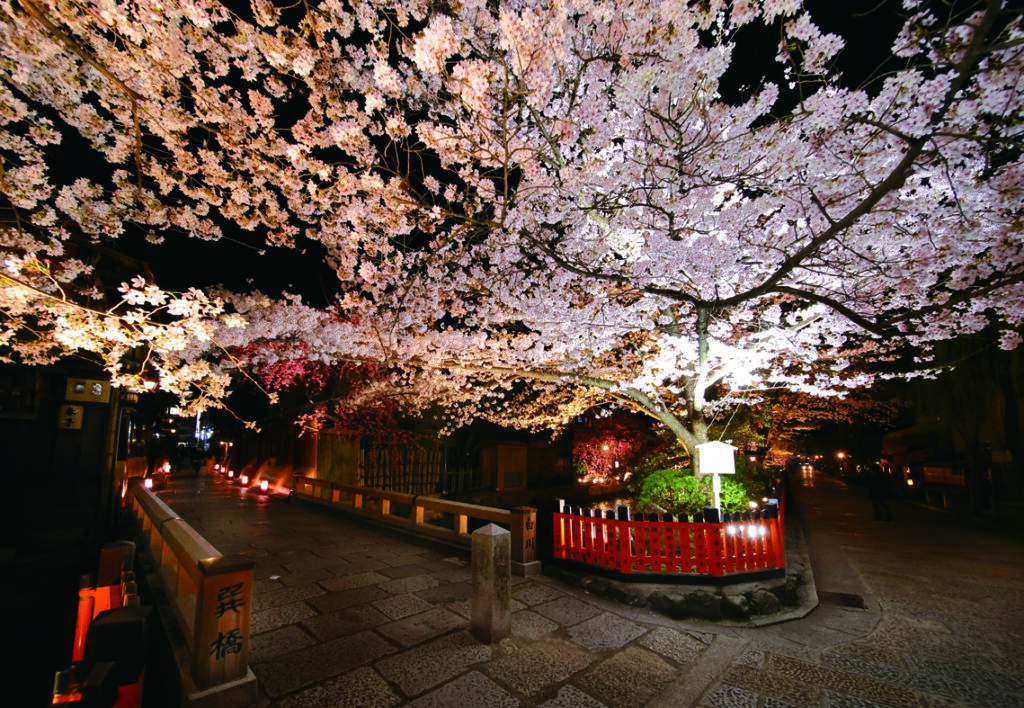

Best time to see: late March to early April
The 30th Gion Shirakawa Yoizakura Light-up
Period / Thursday, March 30, 2023 - Saturday, April 8, 2023
Hours/18:00-22:00
Fee/No charge
The Biwako Sosui, a canal built in the Meiji era to channel water from Lake Biwa from Shiga Prefecture to Kyoto City.
In 2018, the Biwako Sosui Boat, a graceful cruise down the Sosui, was revived, and cruising to view someiyoshino cherry trees and mountain cherry blossoms planted along the Sosui is popular. Another highlight is the collaboration with brick buildings such as Nanzenji Suijikaku, tunnels, and power plants.
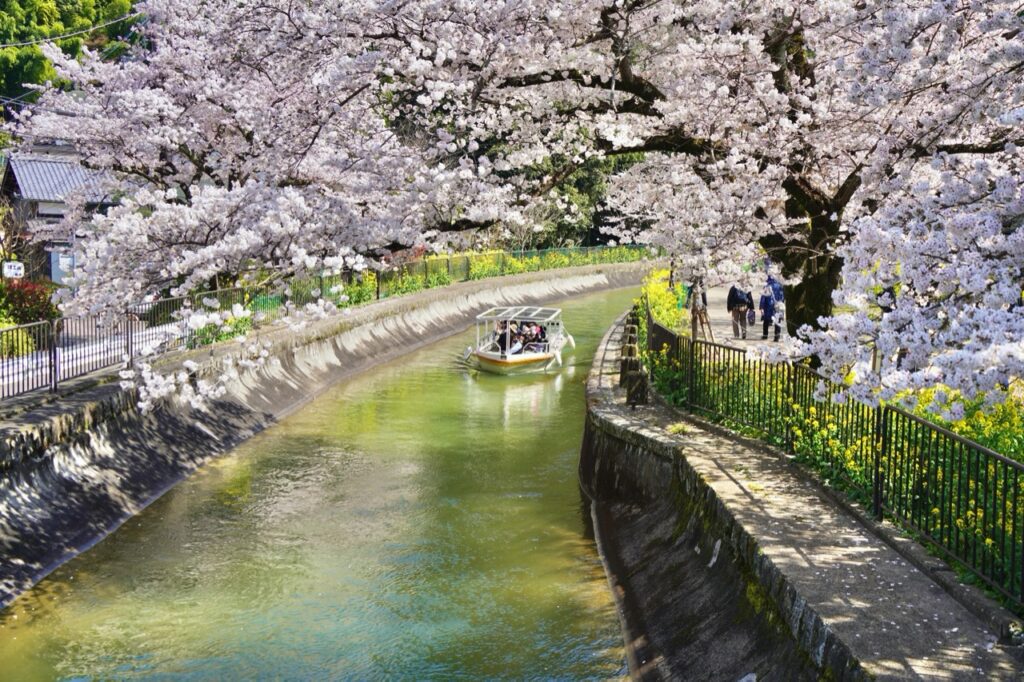

Best time to see: late March to early April
Hours/9:00 - 17:30 (Registration closes at 17:00)
Spring operating period / March 24, 2023 (Fri.) - June 11, 2023 (Sun.)
Fare/Otsu - Keage Adults and children 5,000-8,000 yen
*The entrance fee for details isHPThan
The Fushimi Jujikkoku Boat is a restored version of the 30 stone boats that carried sake, rice, and passengers on the Yodo River during the Edo period (1603-1868).
It is a 50-minute round trip along the Uji River, which at that time was lined with wholesale stores and sake breweries. During the cherry blossom season, visitors can leisurely enjoy the 1km-long row of cherry trees, and at night, the reflection of the cherry blossoms on the surface of the river is a spectacular sight.
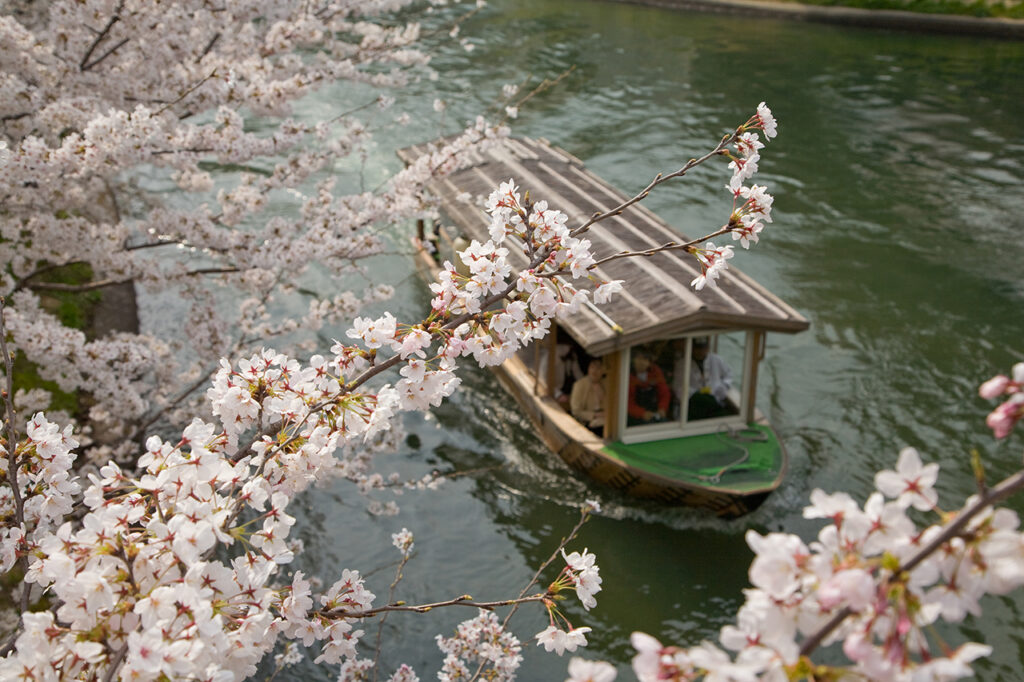

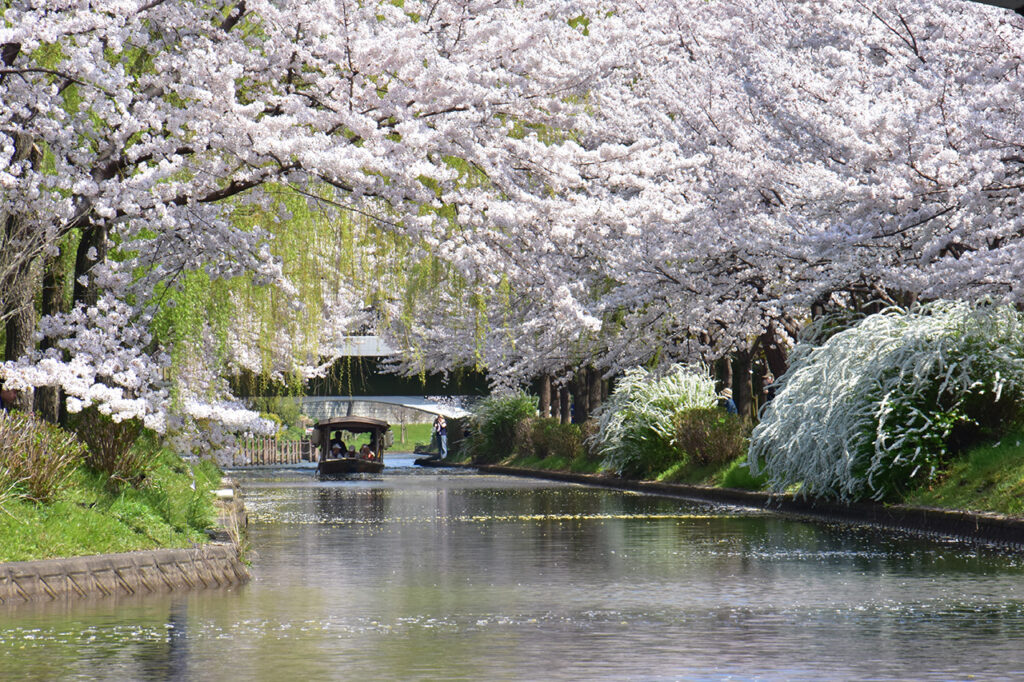

Best time to see: late March to early April
Fushimi Jusekifune
Period / March 18, 2023 (Sat) - December 3, 2023 (Sun) *Out of service from August 14 (Mon) to August 31 (Thu)
Time/10:00-16:20 *Last call at 15:40 from Nov. 25 (Sat.) to Dec. 3 (Sun.)
Fee/Junior high school students and older: 1,500 yen, Elementary school students: 750 yen
Kiyamachi-dori is one of Kyoto's most famous shopping streets, where the historically famous Takase River flows and the streets are lined with Kyoto's traditional atmosphere.
Along the Takase River between Kiyamachi 2-jo and Kiyamachi 5-jo, about 360 Someiyoshino and other cherry trees are planted to delight visitors. The cherry blossoms are sometimes illuminated when they are in bloom, so visitors can enjoy the cherry blossoms at night while going downtown.
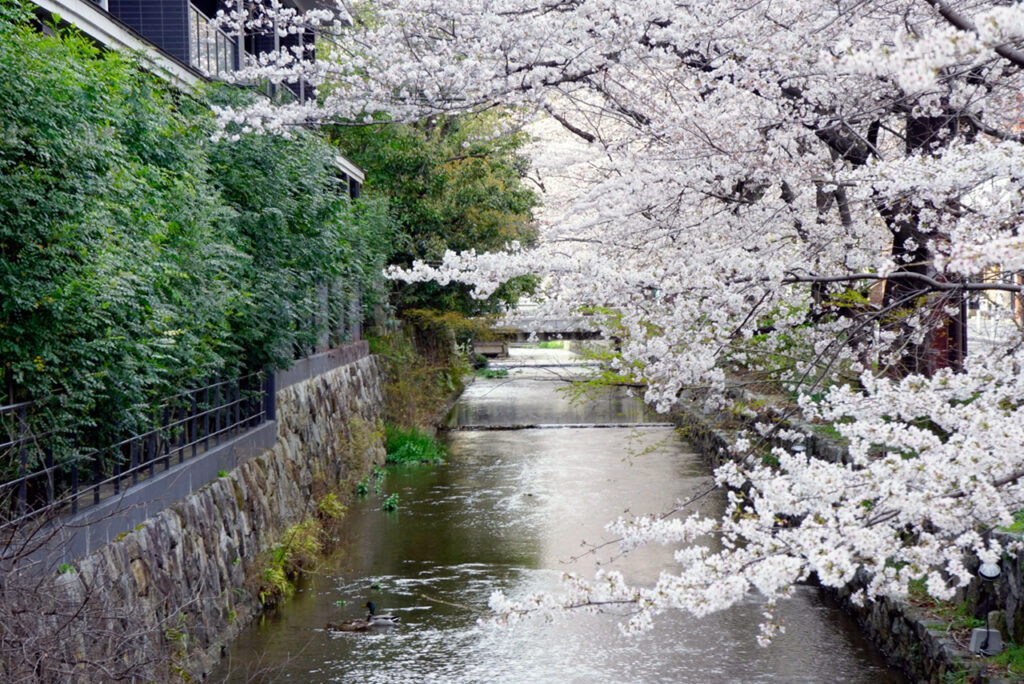



Best time to see: late March to early April
seeing is believing
Over 600 interviews per year! An order site carefully selected by the editors who knows Kyoto and Shiga.
nowOfficial LINE friend registration500 yen OFF coupon is being issued!
Distributed every Friday morning at 8:00 am! From new restaurant information to event information that we want to share with you, We deliver articles about Kyoto that are useful to know. About 20,000 people have registered.Click here to add a friend!
 News
News Feature article
Feature article Featured event
Featured event